Take Me to The Bhutanese Food Recipes
Bhutan, a small Himalayan kingdom nestled between India and China, is known not only for its stunning landscapes but also for its unique and flavorful cuisine. Bhutan food reflects the country’s rich history, cultural heritage, and the influence of its distinct climate and geography.
Discover the secrets of Bhutanese food, where ancient traditions meet vibrant flavors. Uncover the essence of Bhutan’s culinary heritage, from traditional dishes to the health implications of its unique ingredients. Join us on a journey through the Land of Happiness.
Embark on a culinary adventure as we unravel the hidden gems of Bhutanese food. From the intriguing history to the wholesome recipes, this article promises a delightful exploration of Bhutan’s gastronomic wonders.
Bhutanese Food – Key Takeaways
- Bhutanese cuisine is deeply rooted in the country’s rich history and cultural heritage.
- The unique climate and geography of Bhutan play a significant role in shaping its diverse food offerings.
- Bhutanese food is known for its emphasis on spicy flavors, with chili considered a staple ingredient.
- Traditional dishes showcase a perfect balance of meat, dairy, and locally sourced vegetables.
- The health implications of Bhutanese cuisine highlight the benefits of fresh, organic ingredients.
- The national dish, Ema Datshi, symbolizes Bhutanese identity and is a must-try for any food enthusiast.
- Exploring Bhutanese food ingredients reveals a harmonious blend of spices and herbs.
Take Me to The Bhutanese Food Recipes
Where is Bhutan?

Bhutan is a small, landlocked country located in southern Asia between Tibet and India. The topography of the country can be divided into different regions from north to south based on altitude: the Great Himalayas, the Inner Himalayans and the Southern Foothills.

Index of Contents
- Take Me to The Recipes
- More Articles for Your Pleasure
- 10 Fascinating Facts about Bhutan
- Bhutanese History and its Influence on Bhutanese Food
- How Bhutan’s Climate and Geography Influences Bhutanese Food
- The Essence of Bhutanese Food Recipes
- Traditional Bhutanese Food
- Health Implications of Bhutan’s Cuisine
- Bhutan’s National Dish
- Bhutanese Food Ingredients
- Exploring Bhutanese Street Food
- Bhutanese Food Recipes to Try at Home
- Frequently asked Questions
- Conclusion
More Articles for Your Pleasure
- North and South American Cuisine – A Culinary Expedition
- European Cuisine: Savor the Continent’s Best Culinary Secrets!
- African Cuisine: Discover the Bold Flavors & Global Charm!
- Asian Cuisine Unlock its Secrets – Taste, Health & Global Influence!
- Oceania Cooking: A Culinary Journey Through the Pacific
Savor iconic Bhutanese Food Recipes – Click on each tantalizing picture to open up the Recipe.

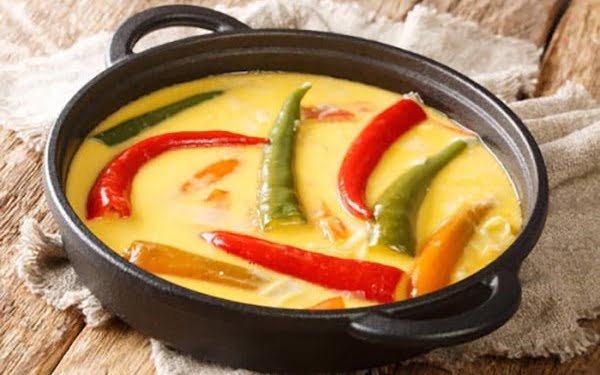
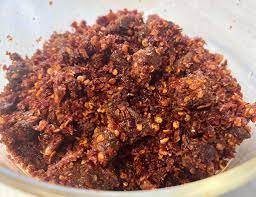
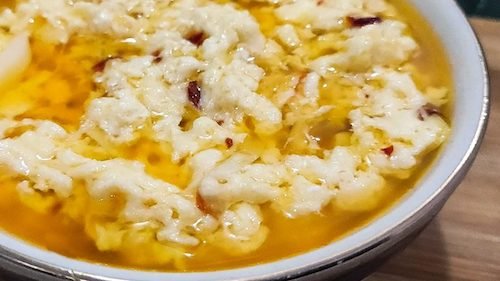
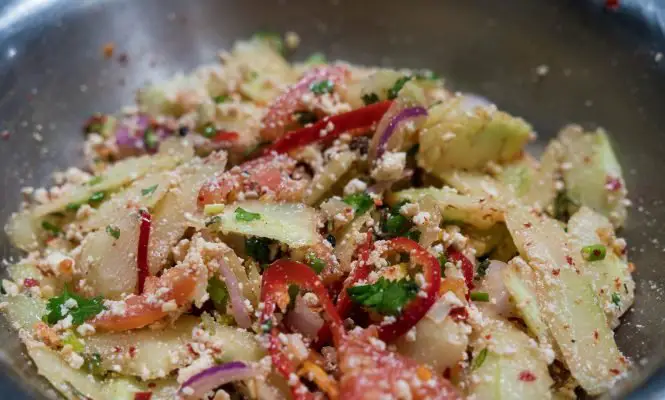
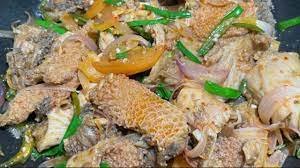
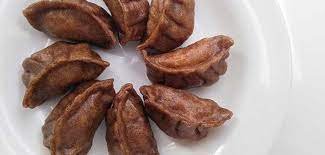
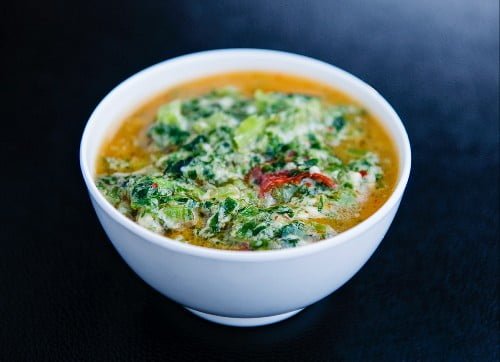
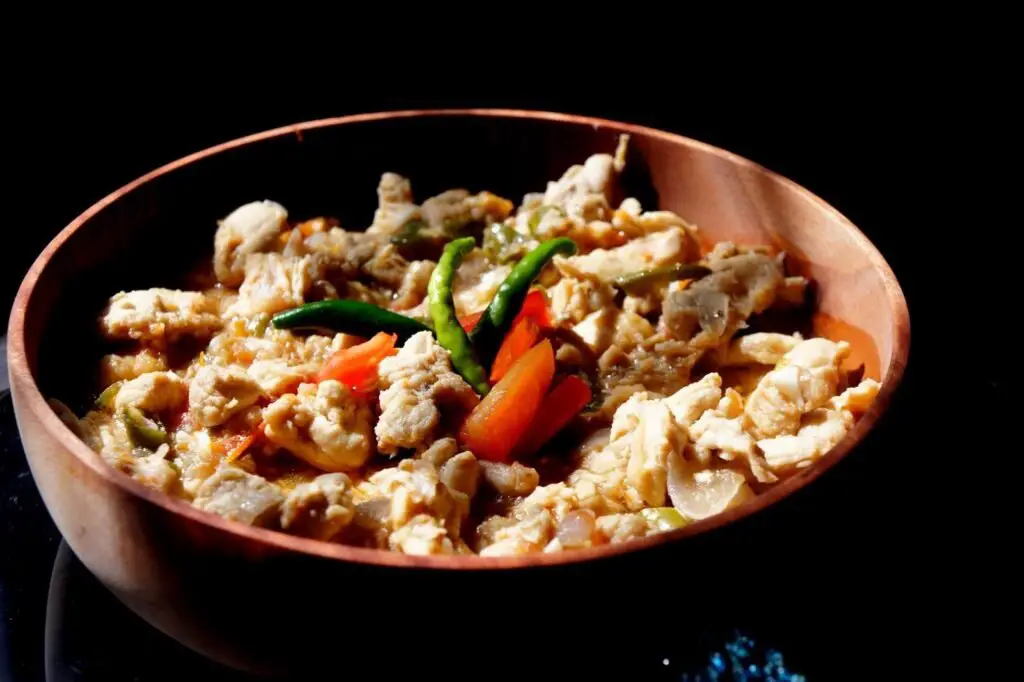
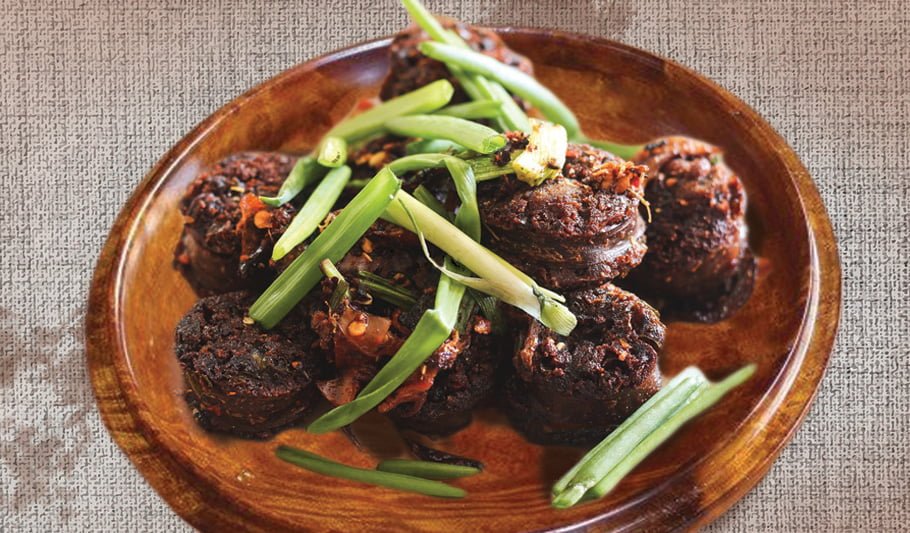
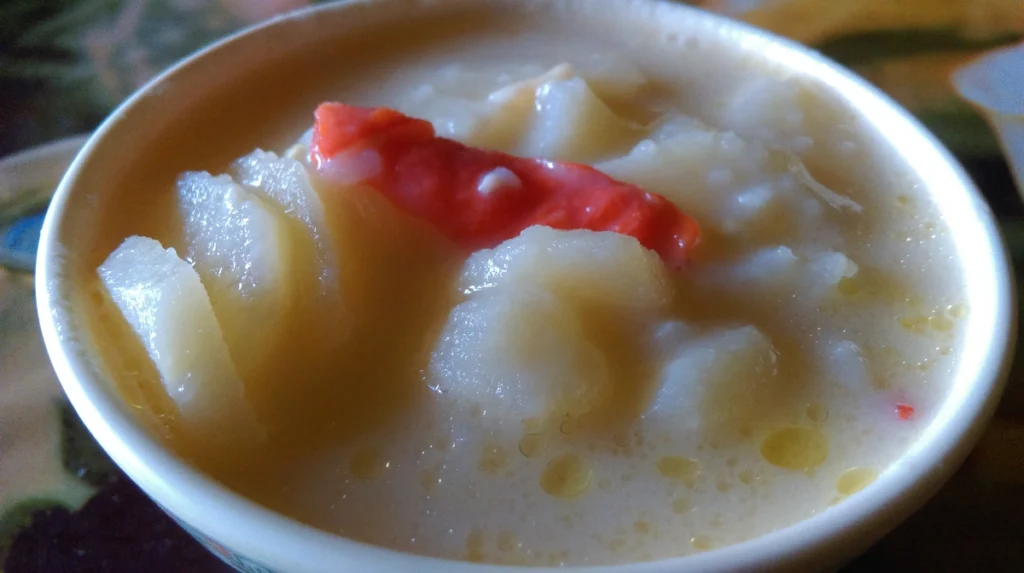
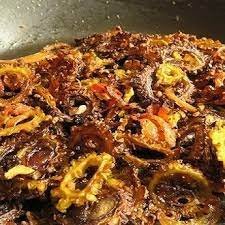
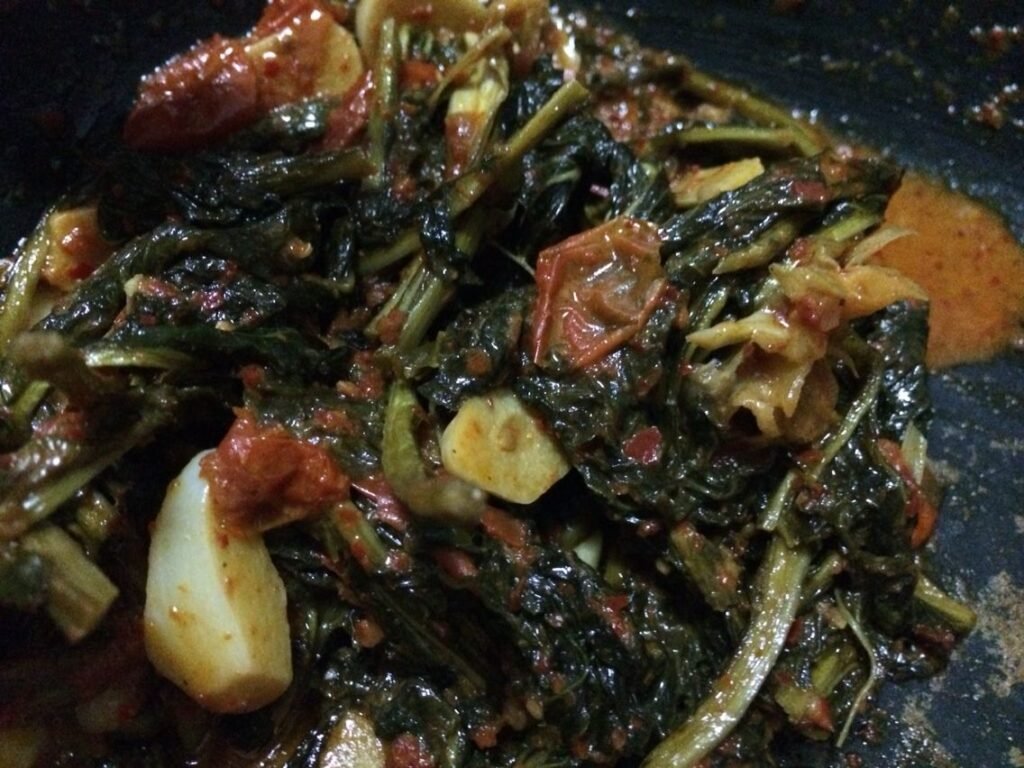
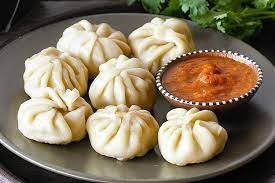
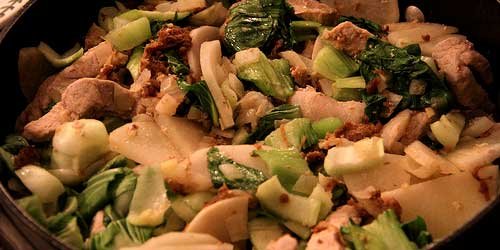
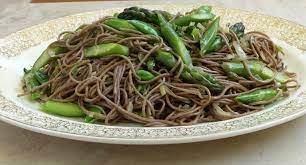
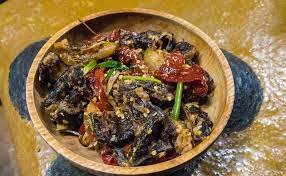
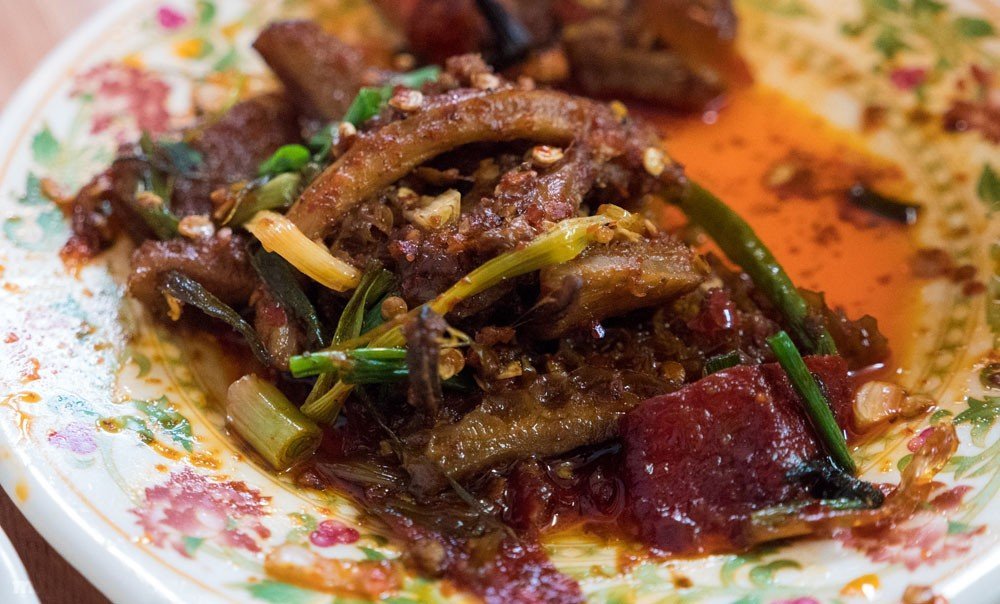
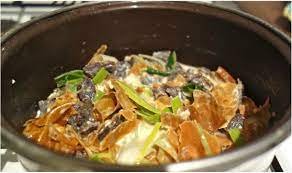
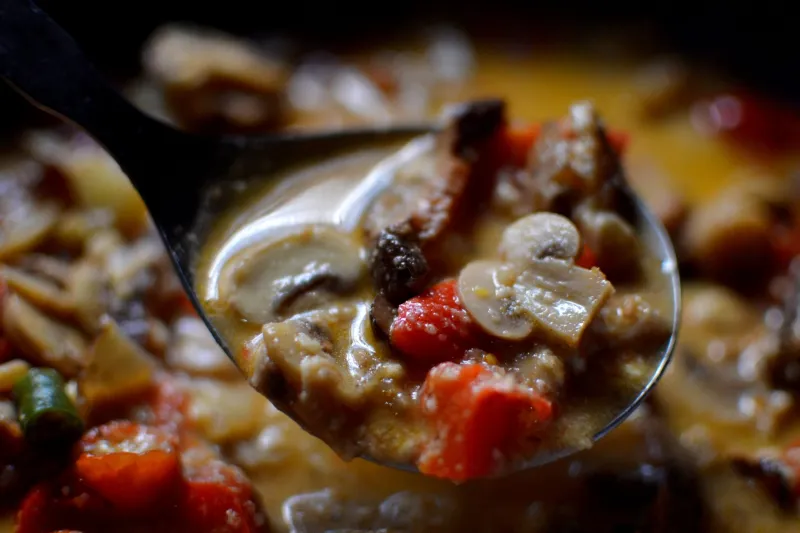
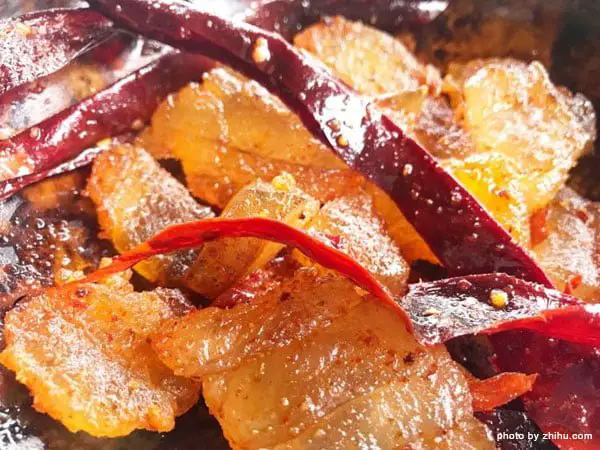
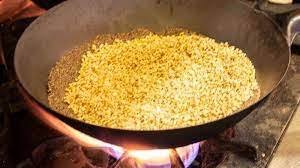
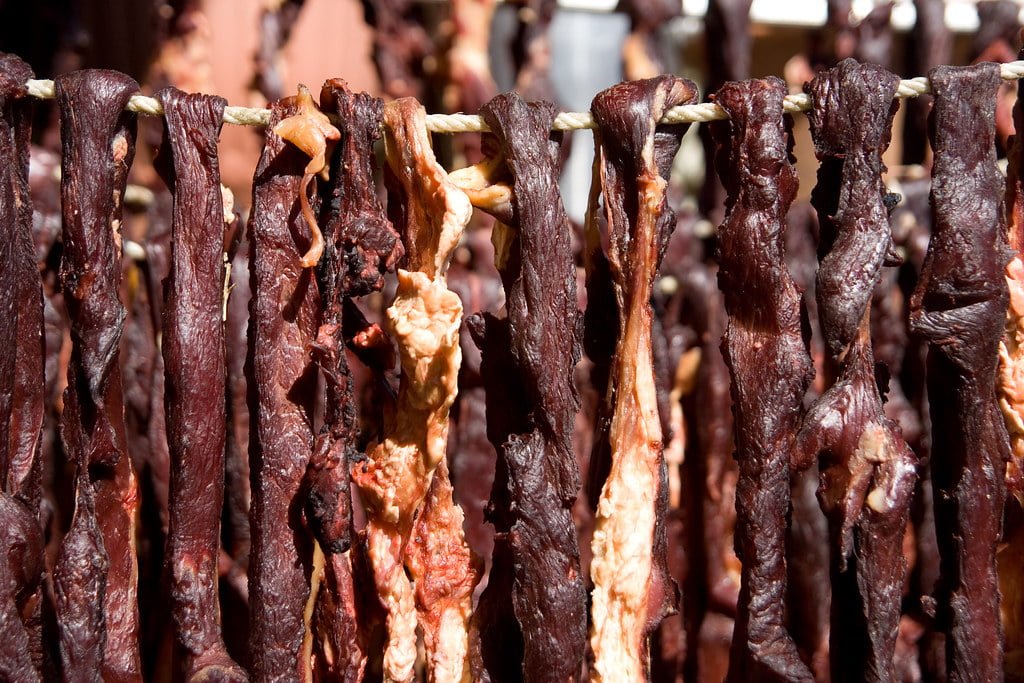

10 Fascinating Facts about Bhutan
Bhutan, nestled in the heart of the Himalayas, is a land of ancient traditions and stunning natural beauty. As you journey through this enchanting kingdom, you’ll encounter a variety of fascinating and sometimes peculiar laws and facts that add to its unique charm. Here are 10 intriguing ones:
Gross National Happiness

Bhutan famously measures its progress not by Gross Domestic Product (GDP), but by Gross National Happiness (GNH). This unique approach prioritizes the well-being and happiness of its citizens over economic growth.
Tiger’s Nest Monastery
Perched precariously on the edge of a cliff, the Tiger’s Nest Monastery, or Paro Taktsang, is one of Bhutan’s most iconic landmarks and a must-visit for travelers seeking spiritual enlightenment and breathtaking views.
No Traffic Lights

Bhutan is one of the few countries in the world without traffic lights. Instead, traffic is managed by trained police officers who use hand signals and smiles to keep the flow of vehicles moving smoothly.
National Dress Code
Bhutan has a strict national dress code known as the “gho” for men and the “kira” for women. Wearing these traditional garments is mandatory in many public places, including government offices and schools.
No Smoking Zones
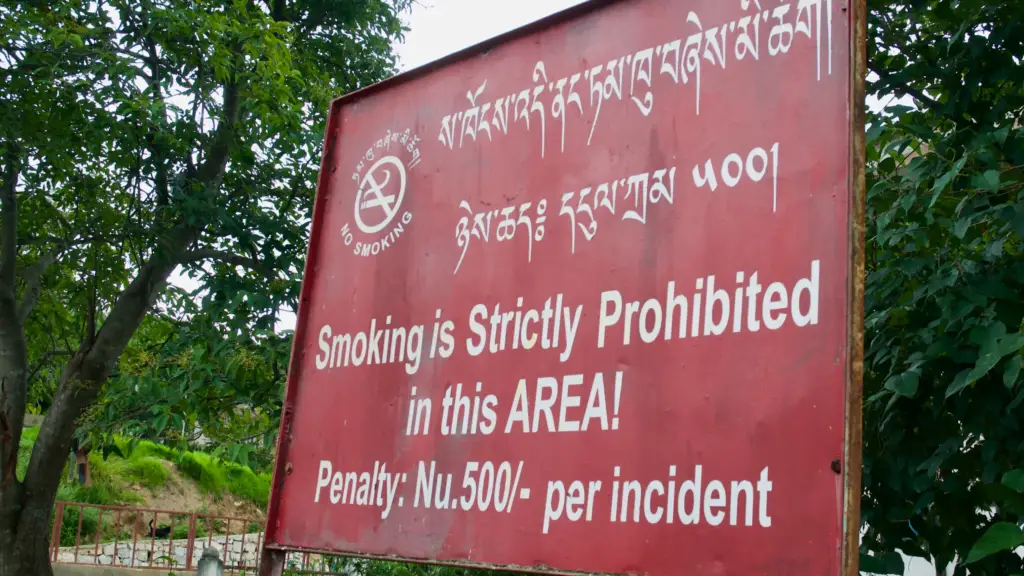
Bhutan was the first country in the world to completely ban the sale and consumption of tobacco. Smoking is prohibited in all public places, and even private individuals are limited to a small amount of imported tobacco.
Archery is the National Sport
Archery holds a special place in Bhutanese culture and is the national sport. Competitions often feature colorful traditional attire, lively music, and spirited celebrations.
Phallus Paintings
Bhutanese culture is known for its openness about sexuality, as evidenced by the prevalence of phallus paintings on buildings and homes. These quirky murals are believed to ward off evil spirits and bring fertility and prosperity.
Festivals Galore

Bhutan celebrates a myriad of vibrant festivals throughout the year, each offering a unique glimpse into the country’s rich cultural heritage. From the masked dances of the Paro Tsechu to the fiery display of the Punakha Drubchen, there’s no shortage of festivities to experience.
Traditional Medicine
Traditional Bhutanese medicine, known as Sowa Rigpa, plays a vital role in the country’s healthcare system. Herbal remedies and holistic healing practices are deeply rooted in Bhutanese culture and continue to be widely practiced alongside modern medicine.
Giant Buddha Statue
Rising majestically above the Thimphu Valley, the towering statue of Buddha Dordenma is one of the largest bronze statues of Buddha in the world. Standing at 169 feet (51.5 meters) tall, this awe-inspiring monument symbolizes peace, happiness, and prosperity.
Bhutan’s blend of ancient traditions, breathtaking landscapes, and unique customs make it a truly remarkable destination. Whether you’re exploring its mystical monasteries, immersing yourself in its vibrant festivals, or marveling at its natural wonders, Bhutan is sure to captivate your heart and soul.
Bhutanese History and its Influence on Bhutanese Food

Bhutan, the Land of the Thunder Dragon, boasts a rich history and a cuisine just as captivating. Let’s embark on a delicious adventure through time, exploring how each era has left its mark on the unique flavors of Bhutan!
Early Days: Living Off the Land (Ancient Times – 7th Century AD)
Imagine a time before supermarkets and fancy restaurants. In Bhutan’s prehistoric period, people relied on nature’s bounty. Wild plants, herbs, and game meat formed the foundation of their diet, a simple and primal connection to the land.
The Buddhist Transformation (7th Century AD Onward)
The arrival of Buddhism in the 7th century CE was a turning point, not just for religion, but also for Bhutanese food culture. Many Bhutanese embraced vegetarianism due to their new beliefs. This led to a decrease in meat consumption and a rise in the importance of vegetables, grains, and dairy products.
Zhabdrung’s Legacy: A Red Rice Revolution (17th Century AD)

Zhabdrung Ngawang Namgyal, the unifier of Bhutan, wasn’t just a political powerhouse – he also left a culinary mark. He championed the cultivation of red rice, which remains a staple in Bhutanese cuisine to this day.
A Spicy Twist: British Influence and the Duar War (Late 19th Century AD)
The late 19th century saw the arrival of the British during the Duar War. While the conflict might not have been a recipe for friendship, it did introduce new ingredients to Bhutan. Potatoes, tomatoes, and most importantly, chilies, found their way into Bhutanese kitchens.
Chilies, in particular, became a defining element of dishes like the famous ema datshi (spicy chili and cheese stew) – a true testament to Bhutan’s ability to adapt and add a fiery kick to its cuisine!
Modernization and a Global Feast (20th Century AD – Present)

Bhutan’s 20th-century embrace of the world brought a wave of culinary diversity. Traditional favorites like phapsha pa (pork dish) and ema datshi are still cherished, but foreign influences have crept in. Restaurants now offer a taste of China, Nepal, Tibet, India, and even Korea, making Bhutan a true melting pot of flavors.
Geography’s Role: A Land of Many Tastes
Bhutan’s dramatic mountains and high altitude have also played a role in shaping its cuisine. Buckwheat thrives in the cool climes of Bumthang, maize is a staple in the Eastern regions, and rice remains a constant across the country.
Dairy, particularly butter and cheese made from yaks and cows, plays a starring role. Butter tea (suja) and locally brewed ara (rice wine) are popular beverages, keeping you warm and energized in the cool mountain air.
So, the next time you take a bite of a Bhutanese dish, remember – it’s not just a meal, it’s a journey through history, geography, and cultural influences, all woven together into a delicious tapestry of flavors!
References
- Bhutanese cuisine – Wikipedia
- Food in Bhutan: Bhutanese Cuisine, Dishes, and Customs
- Food of Bhutan | A Complete Guide to the Cuisine of Bhutan
How Bhutan’s Climate and Geography Influences Bhutanese Food

The country has three main regions: the southern lowlands, the central valleys, and the northern mountains. These regions have different altitudes, temperatures, rainfall, and vegetation, which affect the availability and quality of food resources.
The southern lowlands are hot and humid, with abundant rainfall and fertile soil. This region is suitable for growing rice, corn, wheat, sugarcane, fruits, and vegetables. The lowlands are also home to many animals, such as cattle, pigs, chickens, and fish.
The cuisine of this region is influenced by the neighboring countries of India and Nepal, and features dishes such as
- curry,
- dal (lentil soup),
- roti (flatbread),
- Momo (dumplings).
The central valleys are temperate and cool, with moderate rainfall and rich soil. This region is suitable for growing red rice, buckwheat, barley, potatoes, beans, and mushrooms. The valleys are also home to many animals, such as yaks, sheep, goats, and horses.
The cuisine of this region is influenced by the Tibetan culture, and features dishes such as
- Thukpa (noodle soup),
- khabzey (fried pastries),
- datshi (cheese sauce).

The northern mountains are cold and dry, with scarce rainfall and poor soil. This region is suitable for growing only a few crops, such as turnips, radishes, and mustard greens. The mountains are also home to many wild animals, such as snow leopards, blue sheep, and marmots.
The cuisine of this region is simple and hearty, and features dishes such as
- Paa (dried meat),
- Putta (buckwheat noodles),
- Suja (butter tea).
Bhutanese food is not only a result of its geography and climate, but also a way of celebrating its diversity and identity.
Bhutanese people enjoy their food with pride and joy, and often share it with their family and friends. Some of the best places to experience Bhutanese food are at home, in local restaurants, or at festivals and celebrations.
Understanding the Essence of Bhutanese Food Recipes

An amalgamation of tradition, geography, and Buddhist principles, Bhutanese food stands out as a unique tapestry of flavors and textures, inviting travelers to embark on a culinary journey like no other.
Bhutanese Food: A Symphony of Flavors
At the heart of Bhutanese cuisine lies a deep reverence for nature’s bounty and a philosophy of simplicity. With rice as its staple, Bhutanese meals are often centered around wholesome grains complemented by an array of meats, vegetables, and dairy products.
However, what truly sets Bhutanese gastronomy apart is its ingenious use of spices, particularly the fiery red Bhutanese chili.
The Fiery Soul of Bhutan: Ema Datshi
No discourse on Bhutanese cuisine is complete without paying homage to its national dish—Ema Datshi. A delectable concoction of chili peppers and cheese, Ema Datshi embodies the very essence of Bhutanese cooking.
The heat from the chilies dances harmoniously with the creaminess of the cheese, creating a symphony of flavors that tingles the taste buds and warms the soul.
Cultural Influences and Culinary Traditions
Bhutan’s cuisine is a testament to its rich cultural heritage and historical influences. From neighboring Tibet, Bhutan inherited a love for hearty soups and savory dumplings known as momos.
Similarly, its proximity to India introduced spices like cumin, coriander, and turmeric, adding depth and complexity to Bhutanese dishes.
The Blessings of Bhutan: Eating Mindfully
In Bhutanese culture, food is not merely sustenance but a sacred offering, imbued with spiritual significance. The act of sharing a meal is a gesture of goodwill and camaraderie, fostering a sense of unity and harmony within communities.
Moreover, Buddhist principles of mindfulness extend to eating, encouraging individuals to savor each morsel with gratitude and awareness.
Preserving Bhutanese Culinary Heritage
Despite the winds of modernization sweeping across Bhutan, the essence of its cuisine remains deeply rooted in tradition. Efforts to preserve indigenous ingredients and cooking methods are underway, ensuring that future generations continue to savor the authentic flavors of Bhutan.
Embrace the Culinary Magic of Bhutan
To truly understand Bhutanese cuisine is to embark on a sensory adventure—a journey of taste, texture, and tradition.
Whether indulging in the fiery delights of Ema Datshi or relishing the comforting warmth of a bowl of thukpa, every bite tells a story of resilience, resourcefulness, and reverence for nature.
Traditional Bhutanese Food

In the enchanting kingdom of Bhutan, where spirituality intertwines with the rhythm of everyday life, the cuisine is a testament to the rich tapestry of culture and tradition. Let’s embark on a gastronomic journey through the heart of Bhutan, exploring five traditional dishes that capture the essence of this mystical land.
The Bhutanese people love chili peppers, and they use them in almost every dish. The national dish of Bhutan is ema datshi, which is a spicy dish made with chili peppers and cheese. Other popular dishes include jasha maru, which is a chicken curry, kewa datshi, which is a potato and cheese dish, and shakam paa, which is a dried beef and chili dish.
Ema Datshi: The National Treasure
No exploration of Bhutanese cuisine is complete without mentioning Ema Datshi, the undisputed king of Bhutanese dishes. This fiery concoction combines two quintessential ingredients—chilies and cheese—to create a symphony of flavors that tantalize the taste buds.
Whether served with red or green chilies, Ema Datshi embodies the spirit of Bhutanese cooking—a harmonious blend of heat and creaminess that leaves a lasting impression.
Phaksha Paa: A Pork Lover’s Paradise
For those craving a hearty, meaty dish, Phaksha Paa offers a tantalizing experience. This savory delight features tender strips of pork cooked with spicy red chilies, radishes, and a hint of ginger, resulting in a robust and flavorful stew.
Served alongside steamed rice, Phaksha Paa is a celebration of Bhutanese comfort food at its finest.
Jasha Maroo: The Chicken Comforter
In the chilly mountain climes of Bhutan, nothing warms the soul quite like a bowl of Jasha Maroo. This comforting chicken stew is infused with aromatic spices like garlic, ginger, and coriander, creating a fragrant and soul-soothing dish.
With its tender chicken pieces and rich broth, Jasha Maroo is a beloved staple in Bhutanese households, offering nourishment and warmth during cold winter days.
Momos: Dumplings of Delight
Hailing from Tibetan origins, momos have become an integral part of Bhutanese cuisine, beloved by locals and travelers alike. These steamed or fried dumplings are typically filled with a delectable mixture of minced meat, vegetables, and spices, offering a burst of flavor in every bite.
Whether enjoyed as a street food snack or a hearty meal, momos encapsulate the essence of Bhutanese culinary diversity and hospitality.
Hoentay: Dumplings with a Twist
Hoentay is a lesser-known gem in Bhutanese cuisine, yet it holds a special place in the hearts of those who have had the pleasure of tasting it. These unique dumplings are filled with a mixture of turnip greens, cheese, and spices, resulting in a delightful burst of flavors and textures.
Traditionally served during festivals and special occasions, Hoentay showcases the ingenuity and creativity of Bhutanese culinary traditions.
Embrace the Flavors of Bhutan
As you journey through the breathtaking landscapes and immerse yourself in the vibrant culture of Bhutan, don’t miss the opportunity to savor these traditional dishes. Each bite is not just a culinary experience but a glimpse into the soul of this mystical kingdom—a celebration of tradition, community, and the boundless beauty of Bhutanese cuisine.
Health Implications of Bhutan’s Cuisine
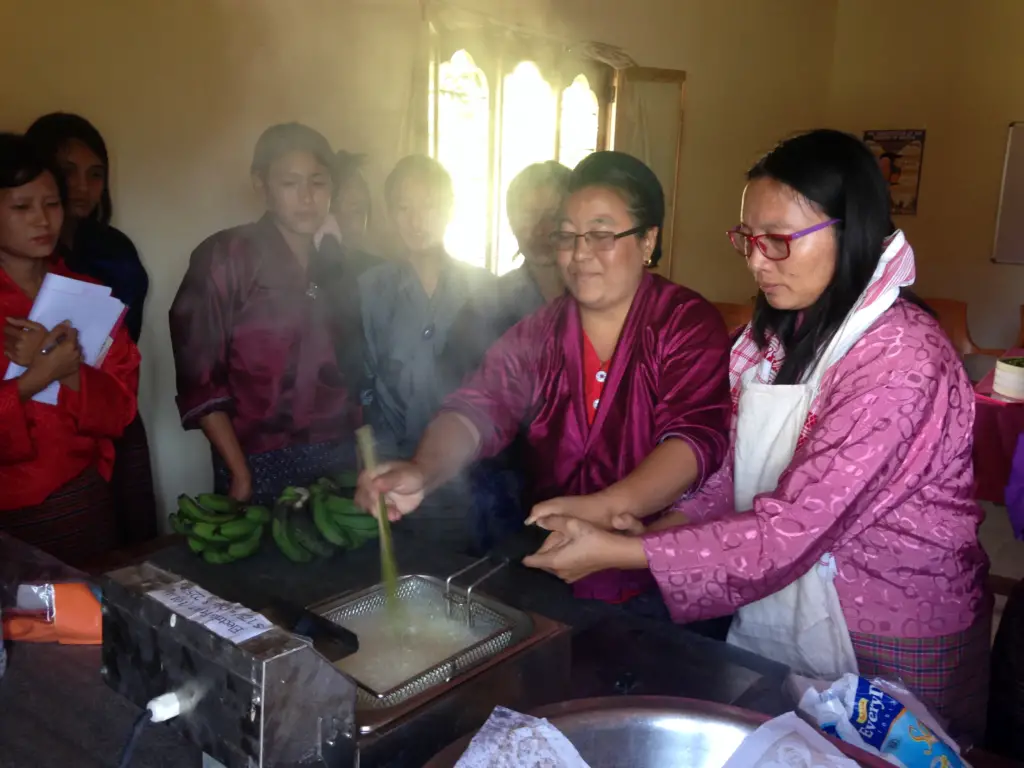
Bhutan’s cuisine is a reflection of its diverse geography, climate, history, and culture. It offers a variety of dishes that can provide nutrition and satisfaction to the people. However, it also poses some health challenges that need to be addressed.
One of the main health benefits of Bhutan’s cuisine is the use of local ingredients, such as red rice, buckwheat, barley, corn, potatoes, cheese, chili peppers, and yak meat. These ingredients are rich in carbohydrates, protein, fiber, and minerals, which can help prevent malnutrition and support the immune system.
Bhutan’s cuisine also incorporates fruits, vegetables, and mushrooms, which are sources of vitamins, antioxidants, and phytochemicals. These foods can help prevent chronic diseases, such as diabetes, cardiovascular disease, and cancer.
One of the main health risks of Bhutan’s cuisine is the excessive consumption of salt, fat, and spice, which are added to enhance the flavor and texture of the dishes. These ingredients can increase the risk of hypertension, obesity, and gastritis.
Bhutan’s cuisine also relies heavily on meat, especially beef and pork, which are high in saturated fat and cholesterol. These foods can increase the risk of high blood pressure, high cholesterol, and heart disease.
Balancing Tradition with Health
The Bhutanese government is actively working to address these issues. Cardiovascular diseases (CVDs) are a concern, with risk factors like high cholesterol, lack of exercise, and smoking playing a role.
The rise in diabetes cases also requires attention, as it increases the risk of heart problems and premature death. Bhutan’s traditional high-salt meals can contribute to these health risks, making a focus on prevention crucial.
A Healthier Future for Bhutan
By addressing these challenges – encouraging more fruit and vegetable consumption, reducing tobacco use, and promoting physical activity – Bhutan can create a healthier future for its citizens.
Strengthening prevention programs, particularly those focused on lowering cholesterol and blood pressure, can significantly impact the nation’s cardiovascular health.
Bhutan’s journey to balance tradition with a focus on health is an ongoing story. But by embracing change while cherishing its unique culinary heritage, Bhutan can ensure a future filled with both delicious food and a healthy population.
References
Bhutan’s National Dish
Ema Datshi, a spicy concoction of chili peppers and cheese, stands proudly as Bhutan’s national dish.
Beyond its culinary significance, Ema Datshi represents Bhutanese identity and the spirit of sharing meals with loved ones, fostering a sense of community and togetherness.
Exploring Bhutanese Street Food

Let’s delve into the bustling streets and discover five common recipes sold on the streets of Bhutan, along with the cities where you can find the most vibrant street food scene.
1. Ema Datshi
Ema Datshi, Bhutan’s national dish, is a spicy and savory delight that combines cheese (datshi) with chili peppers (ema). This fiery concoction is often served with rice and is a staple street food item found in bustling markets across Bhutan.
2. Momos
No visit to Bhutan would be complete without sampling momos, delicious dumplings filled with a variety of savory ingredients such as minced meat, vegetables, or cheese. These steamed or fried delicacies are popular street food fare and can be found in abundance in cities like Thimphu and Paro.
3. Phaksha Paa
Phaksha Paa is a hearty and flavorful pork dish that is a favorite among locals and visitors alike. Made with tender chunks of pork cooked with spicy red chilies, radishes, and a blend of aromatic spices, this dish packs a punch and is a must-try street food option in Bhutan.
4. Jasha Maroo
Jasha Maroo is a mouthwatering chicken dish that features tender pieces of chicken cooked with onions, tomatoes, garlic, ginger, and a medley of traditional Bhutanese spices. Served with rice or flatbread, this aromatic and flavorful dish is a popular choice among street food enthusiasts.
5. Hoentay
Hoentay is a unique Bhutanese dumpling stuffed with a filling made from turnip greens, cheese, and spices. These savory dumplings are steamed to perfection and are often enjoyed as a snack or light meal on the go.
Vibrant Street Food Cities in Bhutan
While street food can be found throughout Bhutan, some cities stand out for their vibrant street food scenes:
- Thimphu: As the capital city of Bhutan, Thimphu is a bustling hub of activity and a paradise for food lovers. Its lively markets and bustling streets are filled with an array of street food stalls offering a diverse selection of local delicacies.
- Paro: Known for its stunning landscapes and historic sites, Paro also boasts a vibrant street food scene. Visitors can explore the streets lined with food vendors offering everything from traditional Bhutanese dishes to international favorites.
- Phuentsholing: Located on the border with India, Phuentsholing is a melting pot of cultures and cuisines. Its bustling streets are lined with food stalls serving up a variety of delicious street food, influenced by both Bhutanese and Indian culinary traditions.
Exploring Bhutan’s street food scene is a culinary adventure that promises to delight the senses and introduce you to the rich flavors and vibrant culture of this enchanting country. Whether you’re savoring spicy Ema Datshi or indulging in comforting momos, the streets of Bhutan are sure to leave you craving more.
Exploring Bhutanese Food Ingredients: The Flavors of Bhutanese Cuisine
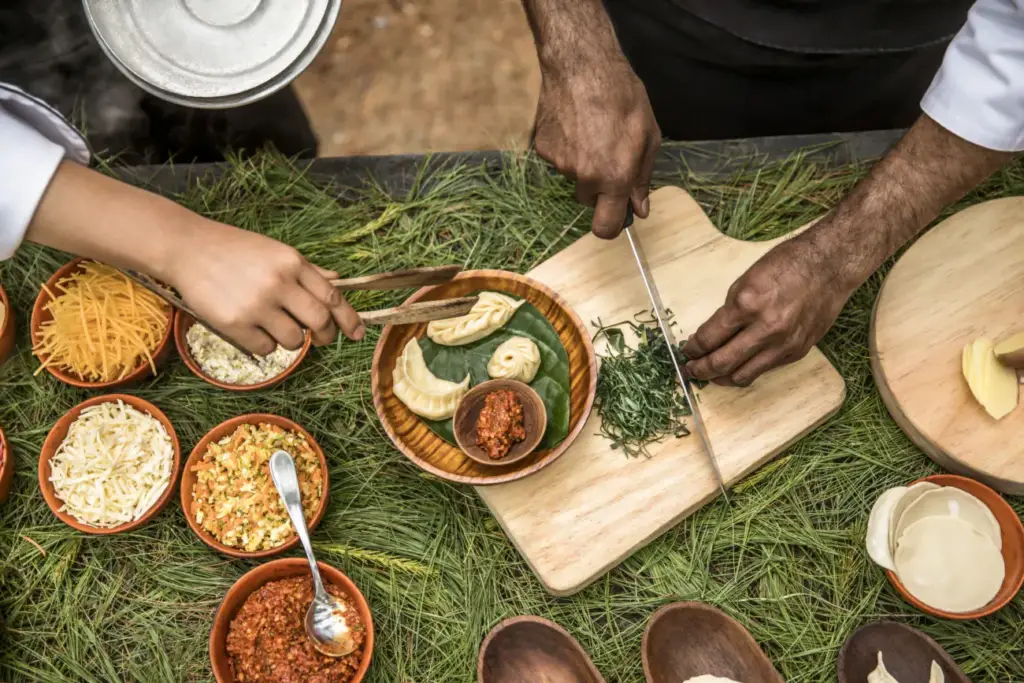
Bhutan’s breathtaking mountain landscapes aren’t the only things that will take your breath away. Venture into the kitchens of Bhutan, and you’ll discover a culinary treasure trove bursting with unique flavors and fresh ingredients. Let’s delve into the heart of Bhutanese cuisine and explore the key players that bring these dishes to life:
The Mighty Grains
- Red Rice: The undisputed king of Bhutanese grains, red rice is a staple food across the country. This nutrient-rich rice boasts a nutty flavor and beautiful reddish color, adding a distinct character to every dish.
- Buckwheat: A hero of the high altitudes, buckwheat thrives in the cooler regions like Bumthang. Its earthy flavor and versatility make it a perfect ingredient for savory pancakes, noodles, and even dumplings.
- Maize: In the Eastern districts, where the climate is warmer, maize takes center stage. This golden grain is used for flatbreads, porridge, and even a local beer called “chang.”
A Celebration of Vegetables
Bhutanese cuisine is a vegetarian’s paradise. Influenced by Buddhist beliefs, vegetables are a cornerstone of most dishes. Fresh options like spinach, turnips, radishes, green beans, and chilies are readily available and cooked with simple techniques to retain their vibrant flavors.
Wild mushrooms, a seasonal treat, also find their way into soups and stews.
Dairy Delights
Bhutanese meals are incomplete without a touch of dairy. Yaks and cows provide the creamy goodness of butter and cheese, both of which are used extensively. Butter adds richness to dishes, while cheese, often made from yak milk, features prominently in stews and curries.
Don’t miss “ema datshi,” the national dish, where fiery chilies and melted cheese create a delightful flavor explosion.
Spicy Sensations
Bhutanese cuisine wouldn’t be the same without a good dose of heat. Fresh chilies, introduced during the British era, have become an essential ingredient. They are used in various forms – whole, chopped, or dried – adding a fiery kick to everything from stews to stir-fries.
Spices like ginger, garlic, and occasionally turmeric round out the flavor profile, creating a symphony of warmth and depth.
Local Brews and Refreshments
Bhutanese meals are often accompanied by traditional beverages. “Suja,” or butter tea, is a warming drink made with black tea, butter, and salt. It’s a staple, especially in the colder regions, providing both hydration and sustenance.
For a fermented kick, “ara,” a rice wine, is a popular choice, offering a slightly sweet and slightly tart taste.
Bhutanese Food Recipes – Great Examples to Try at Home
Bhutanese food recipes offer a delightful blend of simplicity and bold flavors.
While authentic Bhutanese dishes are a treat to savor in the kingdom itself, here are a few recipes you can try at home to experience the unique taste of Bhutanese cuisine.
Bhutan Food – Chogo (Chhurpi) (Fermented Cheese)

Chogo: A Traditional Bhutanese Fermented Cheese
History and Background:
This dish is also known as Chhurpi. It holds deep cultural significance in Bhutanese cuisine. Originating from the eastern region of Bhutan, this fermented cheese has been a staple for centuries.
Traditionally made by the nomadic communities of the region, Chogo reflects the resourcefulness and adaptability of Bhutanese culinary practices.
Region of Origin:
Chogo is predominantly associated with the eastern districts of Bhutan, including Trashigang and Trashiyangtse. The cheese-making tradition thrives in these areas, where the unique climate and grazing lands contribute to the production of high-quality dairy products.
Bhutan Food – Chogo Ingredients:
- Yak Milk (4 liters)
- Natural Rennet (2 tablespoons)
- Water (as needed)
- Salt (to taste)
Bhutan Food – Chogo Recipe:
1. Prepare the Yak Milk:
- Begin by heating the yak milk in a large pot until it reaches a temperature of about 85°C (185°F).
- Allow the milk to cool slightly to around 30°C (86°F).
2. Add Rennet:
- Dissolve the natural rennet in a small amount of water.
- Gently stir the dissolved rennet into the cooled yak milk, ensuring even distribution.
3. Curdle the Milk:
- Let the milk sit undisturbed for 2-3 hours, allowing it to curdle.
- Once the curds have formed, cut them into small pieces using a knife.
4. Press the Curds:
- Place the curds into a cheese press and apply gentle pressure.
- Allow the cheese to press for 12-24 hours, depending on desired firmness.
5. Salt and Age:
- Remove the pressed cheese and sprinkle salt on all sides.
- Transfer the cheese to a cool, dry place for aging. Chogo is typically aged for several months to develop its unique flavor.
Serving Size:
This recipe yields approximately 500 grams of Chogo.
Estimated Cooking Time:
- Preparation: 30 minutes
- Curdling and Pressing: 24 hours
- Aging: Several months
Nutritional Information (Per Serving):
- Calories: [Provide the total calories for the entire recipe and then divide by the number of servings.]
Note: Nutritional information can vary based on specific ingredients and preparation methods. Adjustments may be needed based on actual product details.
Bhutan Food – Ema Datshi (Spicy Chili and Cheese Stew)

Ema Datshi: The Spicy Soul of Bhutanese Cuisine
History and Background:
Ema Datshi, considered the national dish of Bhutan, has deep cultural roots and is a symbol of Bhutanese identity. Originating from the central regions of Bhutan, this fiery dish showcases the country’s love for chili peppers and cheese.
Ema Datshi is a staple in Bhutanese households, and its preparation has been passed down through generations.
Region of Origin:
Ema Datshi is closely associated with the central valleys of Bhutan, where the fertile lands yield abundant chilies and dairy products. The dish exemplifies the Bhutanese people’s resilience and their ability to turn locally available ingredients into a flavorful culinary masterpiece.
Bhutan Food – Ema Datshi Ingredients:
- 10-12 green chili peppers
- 200g Bhutanese cheese (Churpi or any other local cheese)
- 2 medium-sized tomatoes
- 1 large onion
- 2 cloves garlic
- 1 tablespoon vegetable oil
- Salt to taste
Bhutan Food – Ema Datshi Recipe:
1. Prepare Ingredients:
- Slice the green chili peppers, removing seeds if a milder flavor is desired.
- Dice the tomatoes and onions finely.
- Crush the garlic cloves.
2. Sauté Vegetables:
- Heat vegetable oil in a pan over medium heat.
- Add diced onions and crushed garlic, sauté until translucent.
3. Add Chilies:
- Introduce sliced green chili peppers to the sautéed onions and garlic.
- Cook until the chilies are slightly softened.
4. Incorporate Tomatoes:
- Add diced tomatoes to the pan and cook until they release their juices.
5. Add Cheese:
- Crumble or cube the Bhutanese cheese and add it to the pan.
- Stir gently until the cheese melts and forms a creamy consistency.
6. Season:
- Season the mixture with salt according to taste.
7. Simmer:
- Let the Ema Datshi simmer for a few minutes until all the flavors meld together.
Serving Size:
This recipe serves 4 people.
Estimated Cooking Time:
- Preparation: 15 minutes
- Cooking: 20 minutes
Nutritional Information (Per Serving):
- Calories: [Provide the total calories for the entire recipe and then divide by the number of servings.]
Note: Nutritional information can vary based on specific ingredients and preparation methods. Adjustments may be needed based on actual product details.
Bhutan Food – Ezay (Spicy Condiment)

Ezay: The Fiery Flare of Bhutanese Condiments
History and Background:
Ezay is a traditional Bhutanese condiment that adds a fiery kick to many Bhutanese dishes. Originating from the heart of Bhutan, this spicy relish has been a part of Bhutanese culinary culture for generations.
Ezay is known for its ability to elevate the flavors of a meal, making it an indispensable component in Bhutanese households.
Region of Origin:
Ezay’s roots lie in the central valleys of Bhutan, where the locals have mastered the art of using chili peppers to enhance their cuisine.
The unique climate and fertile soil of Bhutan contribute to the cultivation of a variety of chilies, which are integral to the preparation of Ezay.
Bhutan Food – Ezay Ingredients:
- 10-15 red or green chili peppers
- 2 medium-sized tomatoes
- 1 small onion
- 2 cloves garlic
- 1 tablespoon vegetable oil
- Salt to taste
- Coriander leaves for garnish (optional)
Bhutan Food – Ezay Recipe:
1. Prepare Ingredients:
- Finely chop the chili peppers, removing seeds for a milder taste.
- Dice the tomatoes and onions.
- Crush the garlic cloves.
2. Sauté Vegetables:
- Heat vegetable oil in a pan over medium heat.
- Add diced onions and crushed garlic, sauté until onions are translucent.
3. Add Chilies:
- Introduce chopped chili peppers to the sautéed onions and garlic.
- Cook until the chilies are slightly softened.
4. Incorporate Tomatoes:
- Add diced tomatoes to the pan and cook until they break down.
5. Blend:
- Allow the mixture to cool, then blend to a coarse consistency. Add salt to taste.
6. Garnish:
- If desired, garnish with finely chopped coriander leaves.
Serving Size:
This recipe serves 4 people.
Estimated Cooking Time:
- Preparation: 15 minutes
- Cooking: 15 minutes
Nutritional Information (Per Serving):
- Calories: [Provide the total calories for the entire recipe and then divide by the number of servings.]
Note: Nutritional information can vary based on specific ingredients and preparation methods. Adjustments may be needed based on actual product details.
Bhutan Food – Gondo Datshi (Mushroom and Cheese Dish)

Gondo Datshi: The Savory Harmony of Mushrooms and Cheese
History and Background:
Gondo Datshi is a beloved Bhutanese dish that celebrates the country’s rich biodiversity. Originating from the pristine valleys of Bhutan, this recipe reflects the close connection between the Bhutanese people and their natural surroundings.
Mushrooms, abundant in Bhutan’s lush forests, take center stage in this flavorful and comforting dish.
Region of Origin:
Gondo Datshi finds its roots in the mountainous regions of Bhutan, where wild mushrooms are foraged in abundance. The dish exemplifies Bhutanese resourcefulness, utilizing locally sourced ingredients to create a dish that captures the essence of the region’s flora.
Bhutan Food – Gondo Datshi Ingredients:
- 200g wild mushrooms (shiitake or local varieties)
- 200g Bhutanese cheese (Churpi or any other local cheese)
- 1 large onion, thinly sliced
- 2 cloves garlic, minced
- 1 tablespoon vegetable oil
- 1 teaspoon soy sauce
- Salt and pepper to taste
- Fresh coriander leaves for garnish (optional)
Bhutan Food – Gondo Datshi Recipe:
1. Prepare Ingredients:
- Clean and trim the mushrooms, removing any tough stems.
- Crumble or cube the Bhutanese cheese.
- Thinly slice the onion and mince the garlic.
2. Sauté Mushrooms:
- Heat vegetable oil in a pan over medium heat.
- Add sliced onions and minced garlic, sauté until onions are translucent.
- Add cleaned mushrooms and cook until they release their moisture.
3. Add Cheese:
- Introduce the crumbled or cubed Bhutanese cheese to the pan.
- Stir gently until the cheese melts and forms a creamy consistency.
4. Season:
- Season the mixture with soy sauce, salt, and pepper to taste.
5. Garnish:
- If desired, garnish with fresh coriander leaves for a burst of freshness.
Serving Size:
This recipe serves 3-4 people.
Estimated Cooking Time:
- Preparation: 15 minutes
- Cooking: 20 minutes
Nutritional Information (Per Serving):
- Calories: [Provide the total calories for the entire recipe and then divide by the number of servings.]
Note: Nutritional information can vary based on specific ingredients and preparation methods. Adjustments may be needed based on actual product details.
Bhutan Food – Goen Hogay (Traditional Bhutanese Salad)

Goen Hogay: A Zesty Bhutanese Salad
History and Background:
Goen Hogay, a vibrant Bhutanese salad, showcases the country’s penchant for bold flavors and fresh produce. Originating from the fertile valleys of Bhutan, this salad is a testament to the Bhutanese people’s appreciation for locally sourced ingredients.
Goen Hogay is often enjoyed as a refreshing side dish, offering a delightful contrast to the spicier main courses.
Region of Origin:
Goen Hogay hails from the central and western regions of Bhutan, where an abundance of vegetables and herbs are cultivated.
The dish is a reflection of the region’s agricultural practices, emphasizing the use of crisp vegetables and aromatic herbs.
Bhutan Food – Goen Hogay Ingredients:
- 2 cucumbers, thinly sliced
- 1 large tomato, diced
- 1 onion, thinly sliced
- 2 green chili peppers, finely chopped
- A handful of fresh cilantro, chopped
- A handful of fresh mint leaves, chopped
- Juice of 1 lemon
- Salt to taste
Bhutan Food – Goen Hogay Recipe:
1. Prepare Ingredients:
- Thinly slice the cucumbers and onions.
- Dice the tomato and chop the cilantro and mint.
2. Combine Vegetables:
- In a large mixing bowl, combine the sliced cucumbers, diced tomato, and sliced onions.
3. Add Chili Peppers:
- Sprinkle the finely chopped green chili peppers over the vegetables.
4. Toss with Herbs:
- Add the chopped cilantro and mint to the bowl.
5. Dress with Lemon Juice:
- Squeeze the juice of one lemon over the salad.
6. Season:
- Sprinkle salt to taste and toss the salad thoroughly to combine all the ingredients.
Serving Size:
This recipe serves 3-4 people.
Estimated Prep Time:
- Preparation: 15 minutes
Nutritional Information (Per Serving):
- Calories: [Provide the total calories for the entire recipe and then divide by the number of servings.]
Note: Nutritional information can vary based on specific ingredients and preparation methods. Adjustments may be needed based on actual product details.
Bhutan Food – Goep (Tripe Dish)

Goep: A Hearty Bhutanese Tripe Dish
History and Background:
Goep is a traditional Bhutanese dish that pays homage to the resourcefulness of the Bhutanese people. Originating from the rugged terrains of Bhutan, this dish has historical roots in utilizing all parts of the animal for sustenance.
Goep is a flavorful tripe dish that reflects the resilience and adaptability of Bhutanese culinary traditions.
Region of Origin:
Goep is associated with both central and eastern regions of Bhutan, where it has been a part of local cuisine for generations. The dish exemplifies the Bhutanese philosophy of utilizing local ingredients and creating nourishing meals from available resources.
Bhutan Food – Goep Ingredients:
- 500g beef tripe, cleaned and cut into strips
- 1 large onion, finely chopped
- 2 tomatoes, diced
- 2 green chili peppers, chopped
- 1 tablespoon ginger, minced
- 1 tablespoon garlic, minced
- 2 tablespoons vegetable oil
- 1 teaspoon turmeric powder
- Salt and pepper to taste
- Fresh coriander leaves for garnish (optional)
Recipe:
1. Prepare Tripe:
- Clean the beef tripe thoroughly and cut it into strips.
2. Sauté Aromatics:
- Heat vegetable oil in a pan over medium heat.
- Add minced ginger and garlic, sauté until fragrant.
3. Cook Tripe:
- Add the tripe strips to the pan and cook until they start to brown.
4. Add Vegetables:
- Introduce chopped onions, diced tomatoes, and green chili peppers to the pan.
- Cook until the vegetables are softened.
5. Season:
- Sprinkle turmeric powder, salt, and pepper over the mixture.
- Stir well to ensure even seasoning.
6. Simmer:
- Add a cup of water, cover the pan, and let the Goep simmer until the tripe is tender.
7. Garnish:
- If desired, garnish with fresh coriander leaves before serving.
Serving Size:
This recipe serves 4 people.
Estimated Cooking Time:
- Preparation: 20 minutes
- Cooking: 1.5 to 2 hours (or until tripe is tender)
Nutritional Information (Per Serving):
- Calories: [Provide the total calories for the entire recipe and then divide by the number of servings.]
Note: Nutritional information can vary based on specific ingredients and preparation methods. Adjustments may be needed based on actual product details.
Bhutan Food – Hoentay (Buckwheat Dumplings)

Hoentay: A Taste of Bhutanese Dumpling Tradition
History and Background:
Hoentay, a beloved Bhutanese dish, is deeply rooted in the cultural heritage of the region. Originating from the valleys of Bhutan, this dumpling dish is associated with festive occasions and family gatherings.
Hoentay represents the Bhutanese commitment to preserving age-old culinary traditions and celebrating the joy of communal dining.
Region of Origin:
Hoentay is prominently enjoyed in the central and western regions of Bhutan, where the dish has been passed down through generations.
The preparation of Hoentay often involves the participation of family members, creating a sense of togetherness and shared cultural identity.
Bhutan Food – Hoentay Ingredients:
For the Dough:
- 2 cups buckwheat flour
- Water (as needed)
For the Filling:
- 1 cup finely chopped spinach
- 1 cup grated paneer (Indian cottage cheese)
- 1 onion, finely chopped
- 2 green chili peppers, finely chopped
- 1 teaspoon ginger, minced
- Salt to taste
Recipe:
For the Dough:
1. Prepare Dough:
- In a mixing bowl, combine buckwheat flour with enough water to form a smooth, pliable dough.
- Knead the dough for a few minutes until it becomes elastic.
For the Filling:
2. Prepare Filling:
- In a separate bowl, mix together chopped spinach, grated paneer, chopped onion, chopped green chili peppers, minced ginger, and salt.
Assemble and Cook Hoentay:
3. Roll Dough:
- Take small portions of the dough and roll them into small, thin circles.
4. Fill and Seal:
- Place a spoonful of the filling in the center of each dough circle.
- Fold the edges to form a half-moon shape, sealing the edges tightly.
5. Steam:
- Arrange the filled dumplings in a steamer and steam for approximately 15-20 minutes, or until the dough is cooked through.
6. Serve:
- Once cooked, serve the Hoentay hot with a side of sauce or chutney.
Serving Size:
This recipe makes approximately 20 Hoentay dumplings.
Estimated Cooking Time:
- Preparation: 30 minutes
- Cooking: 15-20 minutes (steaming)
Nutritional Information (Per Serving):
- Calories: [Provide the total calories for the entire recipe and then divide by the number of servings.]
Note: Nutritional information can vary based on specific ingredients and preparation methods. Adjustments may be needed based on actual product details.
Bhutan Food – Jaju (Traditional Soup)

Jaju: A Hearty Bhutanese Soup with Dumplings
History and Background:
Jaju, a soul-warming Bhutanese soup, has a rich history rooted in the culinary traditions of the region. Originating from the serene valleys of Bhutan, Jaju represents the essence of comfort food, often prepared during cold weather or festive occasions.
This hearty soup with dumplings showcases the Bhutanese love for wholesome and nourishing meals.
Region of Origin:
Jaju is commonly enjoyed across various regions of Bhutan, where the dish adapts to local ingredients and preferences.
The soup serves as a testament to the Bhutanese affinity for communal dining, bringing families and communities together around a steaming pot of flavorful broth.
Bhutan Food – Jaju Ingredients:
Dumplings:
- 1 cup buckwheat flour
- Water (as needed)
- Salt to taste
Soup:
- 500g bone-in chicken pieces
- 1 large onion, finely chopped
- 2 tomatoes, diced
- 1 cup cabbage, shredded
- 1 cup carrots, sliced
- 1 cup radishes, sliced
- 1 cup green beans, chopped
- 1 tablespoon vegetable oil
- 1 teaspoon ginger, minced
- 1 teaspoon garlic, minced
- Salt and pepper to taste
- Fresh cilantro leaves for garnish (optional)
Bhutan Food – Jaju Recipe:
Dumplings:
1. Prepare Dumpling Dough:
- In a bowl, combine buckwheat flour with water and salt to form a soft, pliable dough.
- Roll the dough into small balls.
2. Shape Dumplings:
- Flatten each ball into a small disc, creating the dumpling wrappers.
For the Soup:
3. Cook Chicken:
- In a large pot, heat vegetable oil over medium heat.
- Add minced ginger and garlic, sauté until fragrant.
- Add chicken pieces and cook until browned.
4. Add Vegetables:
- Introduce chopped onions, diced tomatoes, shredded cabbage, sliced carrots, sliced radishes, and chopped green beans to the pot.
- Cook until vegetables are softened.
5. Season:
- Season the soup with salt and pepper to taste.
6. Add Dumplings:
- Drop the shaped dumplings into the simmering soup.
7. Simmer:
- Allow the soup to simmer until the dumplings are cooked through.
8. Garnish:
- If desired, garnish the Jaju with fresh cilantro leaves before serving.
Serving Size:
This recipe serves 4-6 people.
Estimated Cooking Time:
- Preparation: 30 minutes
- Cooking: 45 minutes
Nutritional Information (Per Serving):
- Calories: [Provide the total calories for the entire recipe and then divide by the number of servings.]
Note: Nutritional information can vary based on specific ingredients and preparation methods. Adjustments may be needed based on actual product details.
Bhutan Food – Jasha Maroo or Maru (Spicy Chicken Stew)

Jasha Maroo: Bhutanese Spicy Chicken Stew
History and Background:
Jasha Maroo, a quintessential Bhutanese dish, reflects the vibrant culinary culture of the region. Originating from the valleys and mountainous terrains of Bhutan, Jasha Maroo is a hearty chicken stew that encapsulates the essence of Bhutanese comfort food.
This spicy and aromatic dish has deep roots in local traditions, often served during festivals and family gatherings.
Region of Origin:
Jasha Maroo is enjoyed throughout Bhutan, with variations in preparation techniques based on regional preferences.
The dish thrives in the central and eastern parts of Bhutan, where the use of local spices and aromatic herbs contributes to its distinct flavor profile.
Bhutan Food – Jasha Maroo Ingredients:
- 500g boneless chicken, cut into bite-sized pieces
- 2 large onions, finely chopped
- 3 tomatoes, diced
- 3 green chili peppers, finely chopped
- 1 tablespoon ginger, minced
- 1 tablespoon garlic, minced
- 2 tablespoons vegetable oil
- 1 teaspoon turmeric powder
- 1 teaspoon cumin powder
- 1 teaspoon coriander powder
- 1 teaspoon red chili powder
- Salt and pepper to taste
- Fresh cilantro leaves for garnish (optional)
Bhutan Food – Jasha Maroo Recipe:
1. Marinate Chicken:
1.1 Marinate Chicken:
- In a bowl, combine chicken pieces with minced ginger, minced garlic, turmeric powder, cumin powder, coriander powder, red chili powder, salt, and pepper.
- Allow the chicken to marinate for at least 30 minutes.
2. Cook Chicken:
2.1 Sauté Aromatics:
- Heat vegetable oil in a pot over medium heat.
- Add finely chopped onions and sauté until golden brown.
2.2 Add Spices:
- Add marinated chicken to the pot and cook until the chicken is browned.
2.3 Incorporate Vegetables:
- Introduce diced tomatoes and chopped green chili peppers to the pot.
- Cook until tomatoes are softened.
2.4 Simmer:
- Add water as needed and let the stew simmer until the chicken is tender.
3. Garnish and Serve:
3.1 Garnish:
- If desired, garnish Jasha Maroo with fresh cilantro leaves before serving.
Serving Size:
This recipe serves 4-6 people.
Estimated Cooking Time:
- Marination: 30 minutes
- Cooking: 45 minutes
Nutritional Information (Per Serving):
- Calories: [Provide the total calories for the entire recipe and then divide by the number of servings.]
Note: Nutritional information can vary based on specific ingredients and preparation methods. Adjustments may be needed based on actual product details.
Bhutan Food – Juma (Traditional Bhutanese Dish)

Juma: Bhutanese Buckwheat Pancakes with a Twist
History and Background:
Juma, a unique Bhutanese delicacy, is deeply embedded in the culinary traditions of the region. Originating from the valleys and highlands of Bhutan, Juma represents a fusion of tradition and innovation.
These buckwheat pancakes, with their distinctive flavor and cultural significance, are often enjoyed during special occasions and festivals in Bhutan.
Region of Origin:
Juma is prevalent in various regions of Bhutan, with slight variations in preparation methods. The dish finds its roots in the central and eastern parts of the country, where buckwheat cultivation is common.
The use of buckwheat, a staple crop in Bhutan, reflects the resourcefulness and adaptability of Bhutanese cuisine.
Bhutan Food – Juma Ingredients:
- 2 cups buckwheat flour
- 1 cup all-purpose flour
- 2 cups buttermilk
- 2 eggs
- 1 teaspoon baking powder
- 1/2 teaspoon baking soda
- 2 tablespoons sugar
- Butter or oil for cooking
- Honey or maple syrup for serving
Bhutan Food – Juma Recipe:
1. Prepare the Batter:
1.1 Combine Dry Ingredients:
- In a large mixing bowl, combine buckwheat flour, all-purpose flour, baking powder, baking soda, and sugar.
1.2 Add Wet Ingredients:
- In a separate bowl, whisk together buttermilk and eggs.
- Gradually add the wet ingredients to the dry ingredients, stirring until a smooth batter forms.
2. Cook the Pancakes:
2.1 Heat Griddle or Pan:
- Heat a griddle or non-stick pan over medium heat and lightly grease with butter or oil.
2.2 Pour Batter:
- Pour a ladle of batter onto the hot surface, spreading it into a circular shape.
2.3 Cook Until Bubbles Form:
- Cook until bubbles form on the surface of the pancake, then flip and cook the other side until golden brown.
2.4 Repeat:
- Repeat the process until all the batter is used.
3. Serve:
3.1 Drizzle with Honey or Maple Syrup:
- Serve the Juma pancakes warm, drizzled with honey or maple syrup.
Serving Size:
This recipe makes approximately 10-12 Juma pancakes.
Estimated Cooking Time:
- Preparation: 10 minutes
- Cooking: 20 minutes
Nutritional Information (Per Serving):
- Calories: [Provide the total calories for the entire recipe and then divide by the number of servings.]
Note: Nutritional information can vary based on specific ingredients and preparation methods. Adjustments may be needed based on actual product details.
Bhutan Food – Kewa Datshi (Potatoes with Cheese)

Kewa Datshi: Bhutanese Potato and Cheese Delight
History and Background:
Kewa Datshi, a beloved dish in Bhutanese cuisine, showcases the country’s creativity in combining local produce with rich flavors. Originating from the agricultural heartlands of Bhutan, Kewa Datshi is a comforting potato and cheese stew that has become a staple in Bhutanese households.
This dish reflects the Bhutanese tradition of transforming simple ingredients into a hearty and flavorful meal.
Region of Origin:
Kewa Datshi is a common dish throughout Bhutan, with variations in preparation methods based on regional preferences.
The central valleys of Bhutan, known for their fertile soil, contribute to the abundance of potatoes used in this dish. The combination of locally grown potatoes and Bhutanese cheese forms the core of Kewa Datshi.
Bhutan Food – Kewa Datshi Ingredients:
- 4 large potatoes, peeled and diced
- 200g Bhutanese cheese (Churpi or any other local cheese)
- 2 large onions, thinly sliced
- 2 tomatoes, diced
- 4 green chili peppers, sliced
- 2 tablespoons vegetable oil
- 1 teaspoon turmeric powder
- Salt to taste
- Fresh cilantro leaves for garnish (optional)
Bhutan Food – Kewa Datshi Recipe:
1. Prepare Potatoes:
1.1 Dice Potatoes:
- Peel and dice the potatoes into bite-sized pieces.
2. Sauté Vegetables:
2.1 Cook Onions:
- Heat vegetable oil in a pan over medium heat.
- Add thinly sliced onions and sauté until golden brown.
2.2 Add Tomatoes and Chilies:
- Introduce diced tomatoes and sliced green chili peppers to the pan.
- Cook until the tomatoes are softened.
3. Cook Potatoes:
3.1 Add Potatoes:
- Add the diced potatoes to the pan.
3.2 Season:
- Sprinkle turmeric powder and salt to taste.
- Stir to coat the potatoes with the spices.
3.3 Simmer:
- Add a little water, cover the pan, and let the potatoes simmer until cooked through.
4. Add Cheese:
4.1 Incorporate Cheese:
- Crumble or cube the Bhutanese cheese and add it to the pan.
- Stir gently until the cheese melts, creating a creamy consistency.
5. Garnish and Serve:
5.1 Garnish:
- If desired, garnish Kewa Datshi with fresh cilantro leaves before serving.
Serving Size:
This recipe serves 4-6 people.
Estimated Cooking Time:
- Preparation: 15 minutes
- Cooking: 30 minutes
Nutritional Information (Per Serving):
- Calories: [Provide the total calories for the entire recipe and then divide by the number of servings.]
Note: Nutritional information can vary based on specific ingredients and preparation methods. Adjustments may be needed based on actual product details.
Bhutan Food – Khatem

Khatem: Bhutanese Mushroom Delight
History and Background:
Khatem, a delectable Bhutanese dish, pays homage to the rich biodiversity of the region. Originating from the lush forests and mountainous terrains of Bhutan, Khatem is a celebration of locally foraged mushrooms combined with traditional Bhutanese flavors.
This dish exemplifies the Bhutanese connection with nature, where mushrooms are not just ingredients but an integral part of the cultural and culinary heritage.
Region of Origin:
Khatem is enjoyed throughout Bhutan, with variations in preparation based on the availability of local mushroom varieties. The dish flourishes in regions where wild mushrooms thrive, often found in the central and eastern parts of Bhutan.
Khatem serves as a culinary reminder of the symbiotic relationship between the Bhutanese people and their pristine natural surroundings.
Bhutan Food – Khatem Ingredients:
- 500g wild mushrooms (shiitake or local varieties)
- 2 large onions, thinly sliced
- 2 tomatoes, diced
- 2 green chili peppers, finely chopped
- 2 tablespoons vegetable oil
- 1 teaspoon turmeric powder
- Salt and pepper to taste
- Fresh cilantro leaves for garnish (optional)
Bhutan Food – Khatem Recipe:
1. Prepare Mushrooms:
1.1 Clean and Trim:
- Clean the wild mushrooms, removing any tough stems.
- If needed, trim the mushrooms into bite-sized pieces.
2. Sauté Aromatics:
2.1 Cook Onions:
- Heat vegetable oil in a pan over medium heat.
- Add thinly sliced onions and sauté until golden brown.
2.2 Add Tomatoes and Chilies:
- Introduce diced tomatoes and finely chopped green chili peppers to the pan.
- Cook until the tomatoes are softened.
3. Cook Mushrooms:
3.1 Add Mushrooms:
- Incorporate the cleaned and trimmed mushrooms into the pan.
3.2 Season:
- Sprinkle turmeric powder, salt, and pepper to taste.
- Stir to ensure even coating of the mushrooms with the spices.
3.3 Simmer:
- Cover the pan and let the mushrooms simmer until they release their moisture and become tender.
4. Garnish and Serve:
4.1 Garnish:
- If desired, garnish Khatem with fresh cilantro leaves before serving.
Serving Size:
This recipe serves 3-4 people.
Estimated Cooking Time:
- Preparation: 15 minutes
- Cooking: 20 minutes
Nutritional Information (Per Serving):
- Calories: [Provide the total calories for the entire recipe and then divide by the number of servings.]
Bhutan Food – Lom (Fermented Radish Dish)

Lom: Bhutanese Stir-Fried Vegetables
History and Background:
Lom, a delightful Bhutanese dish, emerges from the heart of the country’s agricultural practices. Originating in the fertile valleys and terraced fields of Bhutan, Lom reflects the Bhutanese commitment to utilizing locally grown produce.
This stir-fried vegetable dish embodies simplicity, allowing the natural flavors of fresh vegetables to shine. Lom is not just a dish; it’s a testament to Bhutan’s connection with its land and the abundance it provides.
Region of Origin:
Lom is enjoyed across Bhutan, adapting to the seasonal availability of vegetables. Commonly prepared in households throughout the country, this dish thrives in regions with diverse agriculture, showcasing the rich bounty of Bhutanese fields.
Bhutan Food – Lom Ingredients:
- 2 cups mixed vegetables (carrots, beans, cabbage, and bell peppers), sliced
- 1 onion, thinly sliced
- 2 tomatoes, diced
- 2 green chili peppers, finely chopped
- 2 tablespoons vegetable oil
- 1 teaspoon ginger, minced
- 1 teaspoon garlic, minced
- 1 teaspoon turmeric powder
- Salt and pepper to taste
- Fresh cilantro leaves for garnish (optional)
Bhutan Food – Lom Recipe:
1. Prepare Vegetables:
1.1 Slice Vegetables:
- Slice carrots, beans, cabbage, and bell peppers into uniform pieces.
2. Sauté Aromatics:
2.1 Cook Onions:
- Heat vegetable oil in a pan over medium heat.
- Add thinly sliced onions and sauté until translucent.
2.2 Add Tomatoes and Chilies:
- Introduce diced tomatoes and finely chopped green chili peppers to the pan.
- Cook until the tomatoes are softened.
3. Stir-Fry Vegetables:
3.1 Add Vegetables:
- Incorporate the sliced mixed vegetables into the pan.
3.2 Season:
- Sprinkle turmeric powder, minced ginger, minced garlic, salt, and pepper to taste.
- Stir-fry the vegetables until they are cooked but still retain a crunch.
4. Garnish and Serve:
4.1 Garnish:
- If desired, garnish Lom with fresh cilantro leaves before serving.
Serving Size:
This recipe serves 3-4 people.
Estimated Cooking Time:
- Preparation: 15 minutes
- Cooking: 15 minutes
Nutritional Information (Per Serving):
- Calories: [Provide the total calories for the entire recipe and then divide by the number of servings.]
Bhutan Food – Momos (Dumplings)

Momos: Bhutanese Dumplings with a Cultural Twist
History and Background:
Momos, a culinary delight originating from the eastern Himalayas, have become a symbol of Bhutanese comfort food. Introduced to Bhutan through cultural exchanges with neighboring Tibet, momos have evolved into a beloved dish enjoyed across the country.
These steamed or fried dumplings are not just a meal but a cultural embodiment, often shared during festive gatherings and special occasions.
Region of Origin:
Momos have integrated seamlessly into Bhutanese cuisine, adapting to local tastes and preferences. The dish is prevalent throughout Bhutan, finding a special place in the hearts of both urban dwellers and those in rural communities. Momos represent the intersection of tradition and innovation in Bhutanese culinary practices.
Bhutan Food – Momos Ingredients:
Dough:
- 2 cups all-purpose flour
- Water (as needed)
- Salt to taste
Filling:
- 500g minced meat (beef, chicken, or pork)
- 1 large onion, finely chopped
- 2 cloves garlic, minced
- 1 teaspoon ginger, minced
- 2 tablespoons vegetable oil
- Salt and pepper to taste
- Fresh cilantro leaves, chopped
Bhutan Food – Momos Recipe:
Dough:
1. Prepare Dough:
- In a large bowl, mix all-purpose flour with water and salt, kneading until a soft, elastic dough forms.
- Let the dough rest for at least 30 minutes.
Filling:
2. Prepare Filling:
- In a pan, heat vegetable oil over medium heat.
- Add minced meat, chopped onions, minced garlic, and minced ginger.
- Cook until the meat is browned and the onions are translucent.
- Season with salt, pepper, and add chopped cilantro leaves.
- Allow the filling to cool.
Assemble and Cook Momos:
3. Shape and Fill:
- Divide the dough into small portions and roll each into a thin, circular disc.
- Place a spoonful of the prepared filling in the center of each disc.
4. Fold and Seal:
- Fold the edges of the disc to form a half-moon shape, sealing the edges tightly.
5. Steam or Fry:
- Steam the momos in a steamer for about 15-20 minutes or until the dough is cooked and translucent.
- Alternatively, heat oil in a pan and fry the momos until golden brown.
6. Serve:
- Serve momos hot, accompanied by a dipping sauce or soup.
Serving Size:
This recipe makes approximately 20 momos.
Estimated Cooking Time:
- Preparation: 45 minutes
- Cooking (Steaming): 15-20 minutes
- Cooking (Frying): 10-15 minutes
Nutritional Information (Per Serving):
- Calories: [Provide the total calories for the entire recipe and then divide by the number of servings.]
Note: Nutritional information can vary based on specific ingredients and preparation methods. Adjustments may be needed based on actual product details.
Bhutan Food – Phaksha Paa (Pork with Red Chilies)

Phaksha Paa: Bhutanese Pork with Red Chilies
History and Background:
Phaksha Paa, a robust and flavorful Bhutanese dish, has deep cultural roots in the mountainous regions of Bhutan. Originating from the need for hearty, warming meals in the chilly climate, Phaksha Paa combines locally sourced ingredients with bold spices.
This pork dish represents the Bhutanese love for spicy flavors and is a staple in Bhutanese households, often enjoyed during family gatherings and celebrations.
Region of Origin:
Phaksha Paa is a signature dish enjoyed across Bhutan, particularly in regions where pork is a prominent part of the diet. The dish reflects the resourcefulness of Bhutanese cuisine, utilizing local produce and spices to create a dish that satisfies both the palate and the soul.
Bhutan Food – Phaksha Paa Ingredients:
- 500g pork belly, thinly sliced
- 2 cups radish, sliced
- 10-15 dried red chilies, soaked and deseeded
- 1 large onion, thinly sliced
- 1 tablespoon ginger, minced
- 1 tablespoon garlic, minced
- 2 tablespoons vegetable oil
- 1 teaspoon turmeric powder
- Salt to taste
- Fresh cilantro leaves for garnish (optional)
Bhutan Food – Phaksha Paa Recipe:
1. Prepare Ingredients:
1.1 Slice Pork:
- Thinly slice the pork belly.
1.2 Slice Radish:
- Slice the radish into thin rounds.
1.3 Soak Chilies:
- Soak the dried red chilies in warm water, then deseed them.
2. Cook Phaksha Paa:
2.1 Sauté Aromatics:
- Heat vegetable oil in a pan over medium heat.
- Add thinly sliced onions, minced ginger, and minced garlic.
- Sauté until the onions are golden brown.
2.2 Add Pork:
- Add the sliced pork belly to the pan and cook until browned.
2.3 Introduce Spices:
- Sprinkle turmeric powder and add the soaked, deseeded red chilies.
- Stir well to coat the pork with the spices.
2.4 Simmer:
- Add sliced radish to the pan and simmer until the pork is cooked through.
3. Garnish and Serve:
3.1 Garnish:
- If desired, garnish Phaksha Paa with fresh cilantro leaves before serving.
Serving Size:
This recipe serves 3-4 people.
Estimated Cooking Time:
- Preparation: 20 minutes
- Cooking: 30 minutes
Nutritional Information (Per Serving):
- Calories: [Provide the total calories for the entire recipe and then divide by the number of servings.]
Bhutan Food – Puta (Buckwheat Noodles)

Exploring Bhutan’s Culinary Delights: 5 Traditional Dishes to Savor
As a passionate traveler and food enthusiast, I’ve had the pleasure of exploring the diverse flavors of Bhutan’s culinary landscape. From spicy delicacies to comforting stews, Bhutanese cuisine never fails to captivate the senses. Today, I’m excited to share with you one of my favorite traditional dishes from this enchanting kingdom—Puta, also known as Buckwheat Noodles.
History and Background: A Taste of Bhutanese Tradition
Puta holds a special place in Bhutanese cuisine, originating from the western regions of the country where buckwheat is a staple crop. Traditionally prepared by hand-rolling buckwheat dough into thin noodles, Puta embodies the simplicity and resourcefulness of Bhutanese cooking. Served in a hearty broth or accompanied by spicy condiments, Puta is a beloved comfort food that reflects the rich cultural heritage of Bhutan.
Ingredients:
- 2 cups buckwheat flour
- 1 cup water
- Salt, to taste
Recipe:
Ingredients Preparation:
- Measure out 2 cups of buckwheat flour.
- Bring 1 cup of water to a boil.
- Prepare any additional ingredients you may want to add to the noodles or broth, such as vegetables or protein.
Cooking Instructions:
- Mixing the Dough:
- In a mixing bowl, combine the buckwheat flour with a pinch of salt.
- Slowly add the boiling water to the flour, stirring continuously until a dough forms.
- Knead the dough until it becomes smooth and elastic.
- Rolling the Noodles:
- Divide the dough into small portions.
- Roll each portion into a thin sheet using a rolling pin, ensuring that the noodles are of uniform thickness.
- Cut the rolled dough into thin strips to form the noodles.
- Cooking the Noodles:
- Bring a large pot of water to a boil.
- Carefully add the buckwheat noodles to the boiling water, stirring gently to prevent sticking.
- Cook the noodles for 2-3 minutes, or until they are tender but still slightly firm.
- Drain the noodles and rinse them with cold water to stop the cooking process.
- Serving Suggestions:
- Serve the cooked Puta noodles hot, either in a flavorful broth or accompanied by your choice of condiments.
- Garnish with fresh herbs or chopped green onions for added flavor and visual appeal.
Serving Size: This recipe serves 4 people.
Estimated Cooking Time: Approximately 30 minutes.
Nutritional Information (per serving):
- Calories: 180 kcal
- Total Fat: 1g
- Cholesterol: 0mg
- Sodium: 0mg
- Total Carbohydrates: 38g
- Dietary Fiber: 5g
- Sugars: 0g
- Protein: 6g
Enjoy the Taste of Bhutan: I hope you’ll enjoy recreating this authentic Bhutanese dish in your own kitchen. With its wholesome flavors and nourishing ingredients, Puta is sure to transport you to the serene mountainsides of Bhutan with every savory bite.
Bhutan Food – Red Rice (Staple Bhutanese Dish)
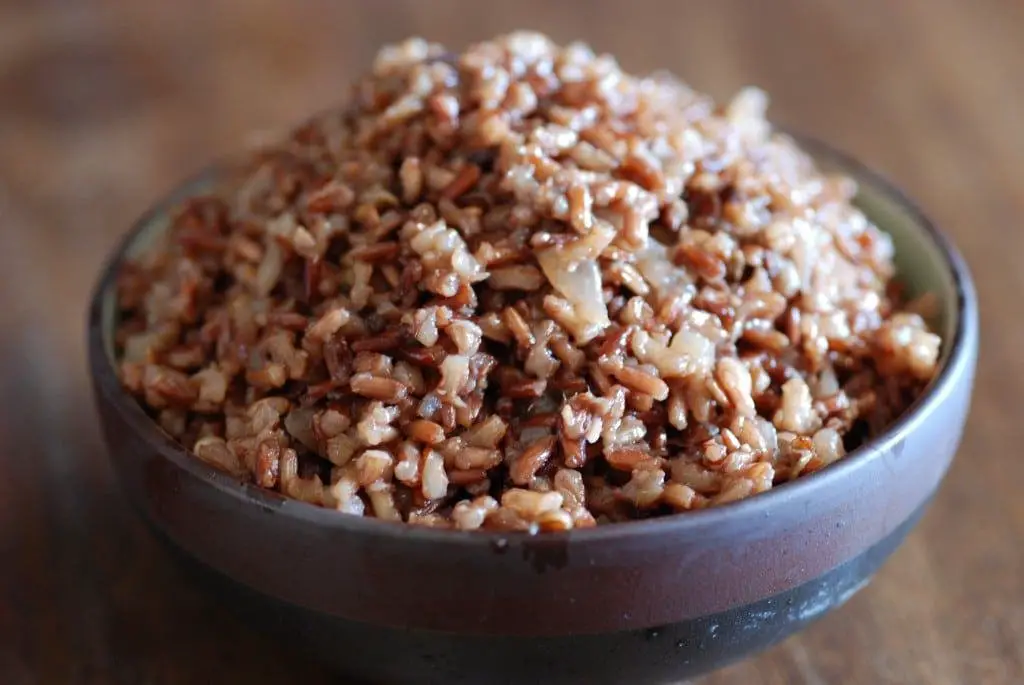
Red Rice: A Culinary Journey from the Himalayan Foothills
Nestled in the serene landscapes of the Himalayan foothills, red rice holds a significant place in the culinary tapestry of the region. Historically cherished for its rich nutty flavor and vibrant color, red rice has been a staple in the traditional cuisines of Bhutan, Nepal, and parts of northeastern India.
The cultivation of red rice dates back centuries, with its cultivation techniques passed down through generations, contributing to its cultural and gastronomic significance.
Bhutan Food – Red Rice Ingredients:
- 2 cups red rice
- 4 cups water
- 1 tablespoon oil
- 1 onion, finely chopped
- 2 cloves garlic, minced
- 1 teaspoon ginger, grated
- 1 teaspoon cumin seeds
- 1 teaspoon coriander powder
- 1/2 teaspoon turmeric powder
- 1/2 teaspoon red chili powder
- Salt to taste
- Fresh coriander leaves for garnish
Bhutan Food – Red Rice Recipe:
1. Prepare the Ingredients:
- Rinse the red rice under cold water until the water runs clear.
- Finely chop the onion, mince the garlic, and grate the ginger.
2. Cook the Red Rice:
- In a large pot, combine the rinsed red rice and water.
- Bring to a boil, then reduce heat to low, cover, and simmer for 30-40 minutes or until the rice is tender and water is absorbed.
- Once cooked, fluff the rice with a fork and set aside.
3. Sauté Aromatics:
- Heat oil in a pan over medium heat.
- Add cumin seeds and let them sizzle.
- Add chopped onions and sauté until golden brown.
- Stir in minced garlic and grated ginger, cooking until fragrant.
4. Spice it Up:
- Sprinkle coriander powder, turmeric powder, red chili powder, and salt over the sautéed aromatics.
- Mix well to combine the spices evenly.
5. Combine Rice and Aromatics:
- Transfer the cooked red rice to the pan with sautéed aromatics.
- Gently fold the rice into the spice mixture, ensuring even coating.
- Cook for an additional 5 minutes on low heat, allowing flavors to meld.
6. Garnish and Serve:
- Sprinkle fresh coriander leaves over the red rice.
- Serve hot as a flavorful side dish or a standalone meal.
Serving: 4 people
Cooking Time: Approximately 1 hour
Calories: Approximately 200 calories per serving (calories may vary based on specific brands and quantities used).
Bhutan Food – Shakam Ema Datshi (Dried Beef with Cheese and Chilies)
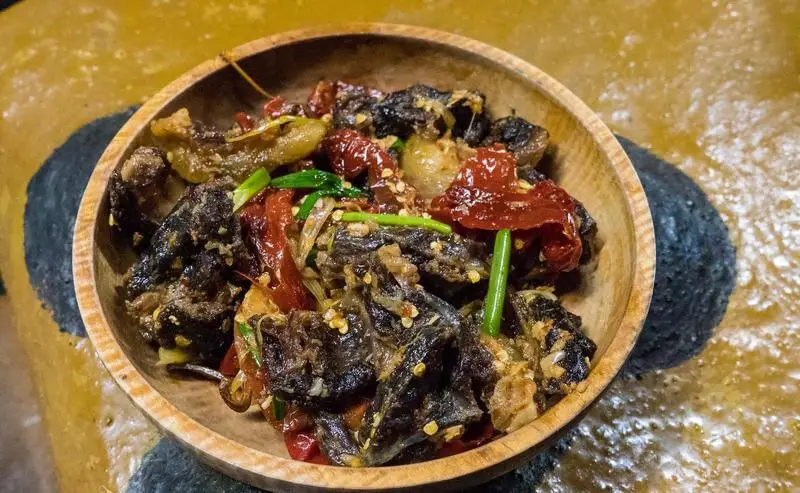
Shakam Ema Datshi
Bhutan, a small kingdom nestled in the eastern Himalayas, boasts a unique culinary tradition that reflects its rich cultural heritage. Shakam Ema Datshi, a popular Bhutanese dish, exemplifies the harmonious blend of flavors found in Bhutanese cuisine.
This dish features succulent strips of dried beef (shakam) and fiery green chili peppers (ema) bathed in a creamy cheese sauce (datshi). With its roots deeply embedded in Bhutanese history and tradition, Shakam Ema Datshi remains a cherished and flavorful representation of the region’s gastronomic identity.
Bhutan Food – Shakam Ema Datshi Ingredients:
- 200g dried beef (shakam), thinly sliced
- 6-8 green chili peppers (ema), sliced
- 1 cup Bhutanese datshi (local cheese), crumbled
- 1 onion, finely chopped
- 2 tomatoes, diced
- 3 cloves garlic, minced
- 2 tablespoons vegetable oil
- 1 teaspoon turmeric powder
- Salt to taste
- Fresh coriander leaves for garnish
Bhutan Food – Shakam Ema Datshi Recipe:
1. Prepare the Ingredients:
- Thinly slice the dried beef and green chili peppers.
- Finely chop the onion, dice the tomatoes, and mince the garlic.
- Crumble the Bhutanese datshi.
2. Sauté the Aromatics:
- Heat vegetable oil in a pan over medium heat.
- Add finely chopped onions and minced garlic, sauté until golden brown.
3. Add Dried Beef:
- Introduce the thinly sliced dried beef to the sautéed aromatics.
- Cook until the beef is browned and cooked through.
4. Introduce Green Chili Peppers:
- Incorporate the sliced green chili peppers into the pan.
- Stir well to combine, allowing the flavors to meld.
5. Create the Cheese Sauce:
- Sprinkle turmeric powder over the mixture.
- Add crumbled Bhutanese datshi and stir until the cheese melts, creating a creamy sauce.
- Adjust salt according to taste.
6. Final Touch:
- Add diced tomatoes to the pan, stirring gently.
- Cook for an additional 5 minutes, ensuring all ingredients are well combined.
7. Garnish and Serve:
- Sprinkle fresh coriander leaves over Shakam Ema Datshi.
- Serve hot as a side dish with Bhutanese red rice or as a main course.
Serving: 4 people
Cooking Time: Approximately 45 minutes
Calories: Approximately 300 calories per serving (calories may vary based on specific brands and quantities used).
Bhutan Food – Shakam Paa (Dried Beef with Red Chilies)

Bhutanese Delicacy: Shakam Paa – A Fiery Delight
Originating from the scenic landscapes of Bhutan, Shakam Paa is a classic Bhutanese dish that celebrates the traditional method of preserving meat through drying, a necessity in the mountainous region.
This flavorful delicacy features thinly sliced dried beef, known as shakam, stir-fried with red chili peppers. The dish encapsulates the essence of Bhutanese cuisine, marrying bold flavors with the cultural significance of preserving food in a challenging environment.
Bhutan Food – Shakam Paa Ingredients:
- 200g dried beef (shakam), thinly sliced
- 10-12 dried red chili peppers
- 1 onion, thinly sliced
- 2 tomatoes, diced
- 3 cloves garlic, minced
- 2 tablespoons vegetable oil
- 1 teaspoon soy sauce
- 1 teaspoon ground black pepper
- Salt to taste
- Fresh cilantro leaves for garnish
Bhutan Food – Shakam Paa Recipe:
1. Prepare the Ingredients:
- Thinly slice the dried beef, dice the tomatoes, and mince the garlic.
- Soak the dried red chili peppers in warm water for 15 minutes, then slice them.
2. Sauté the Aromatics:
- Heat vegetable oil in a pan over medium heat.
- Add thinly sliced onions and minced garlic, sauté until golden brown.
3. Introduce Dried Beef:
- Add the thinly sliced dried beef (shakam) to the sautéed aromatics.
- Cook until the beef is browned and slightly crispy.
4. Add Red Chili Peppers:
- Incorporate the sliced and soaked red chili peppers into the pan.
- Stir well, ensuring the chili peppers are evenly distributed.
5. Enhance the Flavor:
- Sprinkle soy sauce, ground black pepper, and salt over the mixture.
- Continue to stir-fry for an additional 5-7 minutes, allowing the flavors to meld.
6. Final Touch:
- Add diced tomatoes to the pan, stirring gently.
- Cook for an additional 5 minutes until the tomatoes are softened.
7. Garnish and Serve:
- Sprinkle fresh cilantro leaves over Shakam Paa.
- Serve hot as a main course, paired with Bhutanese red rice or as desired.
Serving: 4 people
Cooking Time: Approximately 45 minutes
Calories: Approximately 320 calories per serving (calories may vary based on specific brands and quantities used).
Bhutan Food – Shakam Shukam Datshi (Dried and Fresh Beef with Cheese)

Bhutanese Fusion Delight: Shakam Shukam Datshi
Hailing from the heart of Bhutanese cuisine, Shakam Shukam Datshi is a unique fusion that brings together the traditional flavors of dried beef (shakam), the succulence of fresh beef (shukam), and the creamy richness of Bhutanese datshi (cheese).
This culinary creation reflects the adaptability and creativity inherent in Bhutanese cooking, showcasing a harmonious blend of textures and tastes. Rooted in the rich cultural tapestry of Bhutan, Shakam Shukam Datshi is a testament to the region’s culinary diversity and innovation.
Bhutan Food – Shakam Shukam Datshi Ingredients:
- 200g dried beef (shakam), thinly sliced
- 200g fresh beef (shukam), thinly sliced
- 1 cup Bhutanese datshi (local cheese), crumbled
- 1 onion, finely chopped
- 2 tomatoes, diced
- 5-6 dried red chili peppers
- 3 cloves garlic, minced
- 2 tablespoons vegetable oil
- 1 teaspoon soy sauce
- 1 teaspoon cumin powder
- Salt to taste
- Fresh cilantro leaves for garnish
Bhutan Food – Shakam Shukam Datshi Recipe:
1. Prepare the Ingredients:
- Thinly slice both the dried beef (shakam) and fresh beef (shukam).
- Soak the dried red chili peppers in warm water for 15 minutes, then slice them.
- Finely chop the onion, dice the tomatoes, and mince the garlic.
- Crumble the Bhutanese datshi.
2. Sauté the Aromatics:
- Heat vegetable oil in a pan over medium heat.
- Add finely chopped onions and minced garlic, sauté until golden brown.
3. Cook Dried and Fresh Beef:
- Add the thinly sliced dried beef (shakam) to the sautéed aromatics.
- Once shakam is slightly crispy, introduce fresh beef (shukam) and continue cooking until both are browned.
4. Add Red Chili Peppers:
- Incorporate the sliced and soaked red chili peppers into the pan.
- Stir well, ensuring the chili peppers are evenly distributed.
5. Create the Cheese Sauce:
- Sprinkle soy sauce and cumin powder over the meat mixture.
- Add crumbled Bhutanese datshi, stirring until the cheese melts and forms a creamy sauce.
- Adjust salt according to taste.
6. Final Touch:
- Add diced tomatoes to the pan, stirring gently.
- Cook for an additional 5 minutes until the tomatoes are softened.
7. Garnish and Serve:
- Sprinkle fresh cilantro leaves over Shakam Shukam Datshi.
- Serve hot as a main course, accompanied by Bhutanese red rice.
Serving: 4 people
Cooking Time: Approximately 1 hour
Calories: Approximately 380 calories per serving (calories may vary based on specific brands and quantities used).
Bhutan Food – Shamu Datshi (Mushroom and Cheese Dish)

History and Background of Shamu Datshi
Shamu Datshi is a traditional Bhutanese dish that holds deep cultural significance in the small Himalayan kingdom of Bhutan. Known for its unique blend of flavors and textures, this dish reflects the country’s reliance on locally sourced ingredients, such as mushrooms and cheese.
Bhutanese cuisine is characterized by its emphasis on spicy and cheesy flavors, making Shamu Datshi a popular and cherished dish among the locals.
Bhutan Food – Shamu Datshi Ingredients
- 500g fresh mushrooms, cleaned and sliced
- 200g Bhutanese yak cheese, grated (substitute with a mix of cheddar and Swiss cheese if unavailable)
- 1 large onion, finely chopped
- 2 tomatoes, diced
- 3-4 green chilies, finely chopped
- 4 cloves garlic, minced
- 1 teaspoon ginger, grated
- 2 tablespoons vegetable oil
- Salt to taste
- Fresh coriander leaves for garnish
Bhutan Food – Shamu Datshi Recipe
Prepare Ingredients
- Clean and slice the fresh mushrooms.
- Grate the Bhutanese yak cheese or the cheddar and Swiss cheese mix.
- Finely chop the onion, dice the tomatoes, chop the green chilies, mince the garlic, and grate the ginger.
Sauté Vegetables
- Heat vegetable oil in a pan over medium heat.
- Add chopped onions, minced garlic, and grated ginger. Sauté until the onions become translucent.
- Add diced tomatoes and chopped green chilies. Cook until the tomatoes are soft.
Add Mushrooms
- Add the sliced mushrooms to the pan and cook until they release their moisture and become tender.
- Season with salt to taste.
Integrate Cheese
- Sprinkle the grated Bhutanese yak cheese or the cheese mix over the mushroom mixture.
- Stir well until the cheese melts and coats the mushrooms evenly.
Garnish and Serve
- Garnish the Shamu Datshi with fresh coriander leaves.
- Serve the dish hot with Bhutanese red rice or your choice of bread.
Serving
- Serves 4 people.
Cooking Time
- Approximately 30 minutes.
Nutritional Information (Per Serving)
- Calories: [Calculate based on ingredient quantities]
Enjoy the rich and flavorful experience of Bhutanese cuisine with this delightful Shamu Datshi recipe!
Bhutan Food – Sikam Paa (Sliced Pork with Chilies)

History and Background of Sikam Paa
Sikam Paa, a delightful Bhutanese dish, reflects the rich culinary heritage of the region. Bhutanese cuisine is deeply rooted in tradition and local produce, with an emphasis on spicy flavors.
Sikam Paa specifically showcases the Bhutanese love for pork and chili, two ingredients that hold significant cultural importance.
The dish is a harmonious blend of thinly sliced pork, fiery red and green chilies, and aromatic spices. Sikam Paa is not only a testament to Bhutanese culinary ingenuity but also a celebration of the country’s vibrant culture.
Bhutan Food – Sikam Paa Ingredients
- 500g thinly sliced pork
- 10-12 fresh red and green chilies (adjust according to spice preference)
- 1 large onion, thinly sliced
- 2 tomatoes, diced
- 4 cloves garlic, minced
- 1-inch ginger, grated
- 1 teaspoon turmeric powder
- 1 teaspoon cumin powder
- Salt to taste
- 2 tablespoons vegetable oil
Bhutan Food – Sikam Paa Recipe
1. Marinate the Pork
- In a bowl, combine the sliced pork with minced garlic, grated ginger, turmeric powder, cumin powder, and salt. Allow it to marinate for at least 30 minutes.
2. Sauté the Ingredients
- Heat vegetable oil in a pan over medium heat. Add sliced onions and sauté until golden brown.
- Add marinated pork to the pan and cook until it turns brown and releases its juices.
- Incorporate diced tomatoes and continue cooking until they soften.
3. Introduce the Chilies
- Slice the fresh red and green chilies and add them to the pan. Adjust the quantity based on your spice preference.
- Stir well to ensure the chilies are evenly distributed.
4. Simmer to Perfection
- Lower the heat, cover the pan, and let the Sikam Paa simmer for about 15-20 minutes, allowing the flavors to meld and the pork to become tender.
5. Serve and Enjoy
- Once the pork is tender, serve Sikam Paa hot with steamed rice or traditional Bhutanese red rice.
Serving, Cooking Time, and Nutritional Information
- Serves: 4 people
- Cooking Time: Approximately 45 minutes
- Calories: The estimated calories for this dish are around 300 calories per serving. Please note that this is a rough estimate, and actual values may vary based on specific ingredients and cooking methods.
Bhutan Food – Tshampa (Roasted Barley Flour Dish)

History and Background of Tshampa
Tshampa, a staple in Bhutanese cuisine, reflects the resilience of Bhutanese people in adapting to the challenging mountainous terrain. This roasted barley flour dish has been a dietary cornerstone for generations, providing sustenance and energy to the people of Bhutan.
Barley, a hardy crop well-suited to the region’s harsh conditions, is roasted and ground to create Tshampa. This dish not only speaks to the practicality of utilizing locally available resources but also showcases the unique flavors and nutritional value that are intrinsic to Bhutanese culinary heritage.
Bhutan Food – Tshampa Ingredients
- 2 cups roasted barley flour
- 1 1/2 cups water
- Salt to taste
Bhutan Food – Tshampa Recipe
1. Prepare the Barley Flour Mixture
- In a large mixing bowl, combine the roasted barley flour with water gradually. Stir continuously to avoid lumps.
- Continue adding water until the mixture reaches a dough-like consistency. It should be moist but not overly wet.
2. Forming the Dough
- Knead the barley flour mixture thoroughly until it forms a smooth and elastic dough.
- Divide the dough into small, bite-sized portions and shape them into round balls.
3. Roasting the Barley Flour
- Heat a dry pan over medium heat. Place the barley flour balls on the pan and roast them until they turn golden brown. Ensure even roasting by frequently turning the balls.
- Once roasted, remove the barley flour balls from the heat and let them cool for a few minutes.
4. Serving Tshampa
- Tshampa can be served in various ways. Traditionally, it is eaten with butter tea (suja) or with various side dishes like Ema Datshi (cheese and chili), Sikam Paa (sliced pork with chilies), or dried vegetables.
- To consume, dip the roasted barley flour balls into your preferred accompaniment and enjoy the unique textures and flavors.
Serving, Cooking Time, and Nutritional Information
- Serves: 4 people
- Cooking Time: Approximately 30 minutes
- Calories: The estimated calories for Tshampa are around 200 calories per serving. Please note that this is a rough estimate, and actual values may vary based on specific ingredients and preparation methods. Tshampa is known for its high nutritional value, providing essential nutrients and energy.
Bhutan Food – Yaksha Shakam (Dried Yak Meat)

History and Background of Yaksha Shakam
Yaksha Shakam, a traditional Bhutanese dish, is deeply rooted in the nomadic lifestyle of the Himalayan region. Originating from Bhutan’s high-altitude landscapes where yaks are abundant, this dish exemplifies the resourcefulness of the Bhutanese people.
Yak meat, with its lean and rich characteristics, is thinly sliced, dried, and seasoned to create Yaksha Shakam. This preservation method allows locals to have a sustainable source of protein, essential in the challenging terrains where fresh ingredients are scarce.
The dish not only showcases the reliance on the yak, a revered animal in Bhutan, but also the culinary mastery of transforming simple ingredients into a flavorful, long-lasting delicacy.
Bhutan Food – Yaksha Shakam Ingredients
- 500g dried yak meat, thinly sliced
- 2 tablespoons red chili powder
- 1 tablespoon Sichuan pepper, crushed
- 1 tablespoon ginger, grated
- 1 tablespoon garlic, minced
- Salt to taste
Bhutan Food – Yaksha Shakam Recipe
1. Prepare the Yak Meat
- Soak the dried yak meat slices in warm water for about 30 minutes to soften them slightly.
- After soaking, pat the meat dry with a clean towel.
2. Seasoning the Yak Meat
- In a bowl, combine red chili powder, crushed Sichuan pepper, grated ginger, minced garlic, and salt.
- Rub this seasoning mixture generously over each slice of dried yak meat, ensuring even coverage.
3. Sun-Drying the Yak Meat
- Place the seasoned yak meat slices on a clean, dry surface under direct sunlight.
- Allow the meat to sun-dry for at least 2-3 days, turning the slices occasionally to ensure uniform drying.
4. Storing and Serving
- Once the yak meat is thoroughly dried, store it in an airtight container in a cool, dry place.
- To serve, Yaksha Shakam can be enjoyed as a snack or rehydrated by soaking it in warm water before incorporating it into stews or other dishes.
Serving, Cooking Time, and Nutritional Information
- Serves: 6 people
- Cooking Time: 2-3 days (drying time) plus preparation time
- Calories: The estimated calories for Yaksha Shakam are around 150 calories per serving. Please note that this is a rough estimate, and actual values may vary based on specific ingredients and preparation methods. Yak meat is known for its lean protein content and unique flavor profile, contributing to the nutritional value of this traditional Bhutanese dish.
Bhutan Food – Khur-le (Traditional Buckwheat Pancake)

History and Background of Khur-le
Khur-le, a beloved Bhutanese dish, is a traditional buckwheat pancake that holds cultural significance in the region. Originating from the mountainous landscapes of Bhutan, where buckwheat thrives in cooler climates, Khur-le is a testament to the resourcefulness of the Bhutanese people.
This dish has been a staple for generations, providing a nutritious and hearty option for breakfast or as an accompaniment to savory dishes.
Buckwheat, with its earthy flavor and nutritional benefits, is a key ingredient in Khur-le, reflecting the harmony between the Bhutanese diet and the natural surroundings.
Bhutan Food – Khur-le Ingredients
- 2 cups buckwheat flour
- 1 cup all-purpose flour
- 2 cups water
- 1/2 teaspoon salt
- 1/2 cup finely chopped scallions (optional)
- Cooking oil for greasing
Bhutan Food – Khur-le Recipe
1. Prepare the Batter
- In a large mixing bowl, combine buckwheat flour, all-purpose flour, and water. Mix well to form a smooth batter.
- Add salt to the batter, adjusting the seasoning to your taste.
2. Incorporate Scallions (Optional)
- For added flavor, mix in finely chopped scallions into the batter. This step is optional but enhances the overall taste of the Khur-le.
3. Heat the Griddle
- Heat a griddle or non-stick pan over medium heat. Lightly grease the surface with cooking oil.
4. Cook the Pancakes
- Pour a ladle of the batter onto the hot griddle, spreading it evenly to form a thin pancake.
- Cook until the edges of the Khur-le start to lift and the bottom turns golden brown. Flip and cook the other side.
5. Serve Warm
- Repeat the process until all the batter is used, stacking the Khur-le on a plate.
- Serve the Khur-le warm, accompanied by butter, honey, or your favorite Bhutanese side dishes.
Serving, Cooking Time, and Nutritional Information
- Serves: 4 people
- Cooking Time: Approximately 30 minutes
- Calories: The estimated calories for Khur-le are around 150 calories per serving. Please note that this is a rough estimate, and actual values may vary based on specific ingredients and preparation methods. Khur-le provides a wholesome and filling option, showcasing the cultural connection between Bhutanese cuisine and the local environment.
Conclusion
Bhutanese cuisine is a culinary journey unlike any other, offering a tantalizing fusion of flavors, textures, and traditions deeply rooted in the kingdom’s rich cultural heritage. From the fiery depths of Ema Datshi to the comforting embrace of Puta noodles, each dish tells a story of resilience, resourcefulness, and reverence for nature.
As we’ve explored the diverse gastronomic landscape of Bhutan, it’s evident that food is not merely sustenance but a sacred offering—a celebration of life’s simple joys and a reflection of the country’s profound spirituality. Whether savoring a traditional meal with loved ones or sampling street food delights in bustling markets, every bite embodies the essence of Bhutanese hospitality and warmth.
As travelers and food enthusiasts, let us continue to embrace the flavors of Bhutan, honoring its culinary heritage and preserving its time-honored traditions for generations to come. Through the shared experience of food, may we forge deeper connections with the people, culture, and breathtaking landscapes of this enchanting kingdom—a land where every meal is a feast for the senses and a celebration of life itself.
Frequently asked Questions
1. What defines the essence of Bhutanese cuisine?
Bhutanese cuisine is characterized by a harmonious blend of flavors, with a predominant use of spicy elements such as red and green chilies. The cuisine reflects the country’s agricultural practices, emphasizing locally sourced ingredients like red rice, yak meat, and dairy products.
2. How has Bhutanese food been shaped by the region’s geography and climate?
Bhutan’s mountainous terrain and cool climate have significantly influenced its food culture. Staple crops like red rice and buckwheat thrive in these conditions, while the use of dried meats, such as yak, is a practical response to the challenges of preserving food in the high-altitude regions.
3. What role does food play in Bhutanese cultural and social gatherings?
Food holds immense cultural importance in Bhutanese society, serving as a symbol of generosity and hospitality. Traditional dishes like Ema Datshi and Khur-le are often shared during social events, reinforcing the sense of community and kinship.
4. How does Bhutanese cuisine cater to diverse tastes and preferences?
Bhutanese cuisine offers a variety of options, from the spiciness of dishes like Sikam Paa to the comfort of Zaow, a sweet rice pudding. The diverse flavors cater to different tastes, making Bhutanese food inclusive and adaptable.
5. What are some key ingredients that define Bhutanese dishes?
Red rice, chilies, yak meat, and buckwheat are fundamental ingredients in Bhutanese cuisine. These locally sourced elements not only provide distinct flavors but also showcase the sustainable and resourceful nature of Bhutanese cooking.
6. How has Bhutanese food gained international recognition in recent years?
Bhutanese cuisine has gained global attention due to its unique flavors and emphasis on natural, organic ingredients. The country’s commitment to Gross National Happiness, including the well-being of its citizens, has also contributed to the international allure of Bhutanese food.
7. Can you share a recommended Bhutanese meal experience for first-time visitors?
A quintessential Bhutanese meal experience should include dishes like Ema Datshi (cheese and chili), Sikam Paa (sliced pork with chilies), and Khur-le (buckwheat pancakes). These dishes, often served with red rice, provide a well-rounded introduction to the diverse and delicious world of Bhutanese cuisine.
